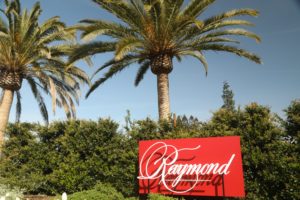

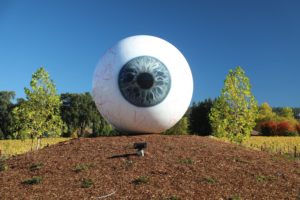 Raymond Vineyards was founded in 1971 by Roy Raymond and his two sons Roy Raymond Jr and Walter with their first vintage produced in 1974. Their first estate bottled wine was a Riesling released in 1977. The family has a long history in Napa Valley dating back multiple generations to the 1930s. When Roy arrived in the Napa Valley in 1933 (he was born in San Francisco), he was hired as a cellar “rat” at age 18 at Beringer Winery in the fall of that year, just prior to the repeal of Prohibition and ultimately worked for the winery for 37 years including in the early years with Otto Beringer, the son of cofounder Jacob Beringer. Beringer was one of a select few Napa wineries that were able to stay open during Prohibition by making sacramental and medicinal wine; the year after Prohibition they were hiring additional employees in anticipation of an increase in production.
Raymond Vineyards was founded in 1971 by Roy Raymond and his two sons Roy Raymond Jr and Walter with their first vintage produced in 1974. Their first estate bottled wine was a Riesling released in 1977. The family has a long history in Napa Valley dating back multiple generations to the 1930s. When Roy arrived in the Napa Valley in 1933 (he was born in San Francisco), he was hired as a cellar “rat” at age 18 at Beringer Winery in the fall of that year, just prior to the repeal of Prohibition and ultimately worked for the winery for 37 years including in the early years with Otto Beringer, the son of cofounder Jacob Beringer. Beringer was one of a select few Napa wineries that were able to stay open during Prohibition by making sacramental and medicinal wine; the year after Prohibition they were hiring additional employees in anticipation of an increase in production.
While at Beringer Roy met and married Martha Jane Beringer, Jacob Beringer’s granddaughter. Yes, there are a number of cross winery marriages in the valley – even today. After Beringer sold in the early 1970s the Raymonds’ purchased 90 acres just south of the town of St. Helena which surrounds the current winery. Land in the valley was certainly much cheaper back then.
Roy served two terms as president of the Napa Valley Vintners Association and was also a council member on St. Helena’s city council for 8 years. He died at age 83 in 1998.
At its peak, Raymond owned over 300 acres in the Napa Valley including vineyards near Jameson Canyon next to Chardonnay Vines Golf Course (but they have since sold this vineyard), a small vineyard in St. Helena, just north of the winery and the vineyard surrounding their winery in Rutherford. Their St. Helena and Rutherford vineyards are certified organic and biodynamic. They also source fruit from a variety of other vineyards in the valley ranging from Carneros in the south to Calistoga in the north (while they do not own these vineyards, they are all farmed organically.
In 1989 Kirin Brewery purchased a majority interest in Raymond Vineyards. In 2009, Raymond sold the winery to the well-regarded Boisset Family from Burgundy, France. Jean-Charles Boisset, president of Boisset Family Estates, owns several prominent wineries in the Napa/Sonoma region including California’s oldest winery, Buena Vista and Pinot Noir producer, De Loach Vineyards (both in Sonoma County). Jean-Charles is also married to Gina Gallo, of one of California’s most recognizable winery families – the GALLO. They own the home that Robert & Margrit Mondavi used to live in.
Guests who visited Raymond Winery before Jean-Charles purchased the estate and then after, will absolutely not recognize the inside of the winery. It has taken a unique mind, creativity and more than a pinch of flamboyance to turn “what was” into “what is now”. It is impressive in a certain sense to have witnessed this change.
Perhaps in the history of Napa Valley there is no one else who has combined such extreme creativity with the financial means to build a continuously growing empire built around wine and food, connected by a visual flamboyance & opulence rooted in unique and memorable experiences. One may only see a part of this empire, but when one starts connecting all the spaces and projects, one realizes how vast a reach the Boisset empire has obtained – deeply rooted in both Napa Valley and the No Cal wine scene in a remarkably short amount of time.
While Jean Charles continues to embrace change in all aspects of the wine business, there is one constant found at all of his properties. These are the framed newspaper articles promoting his accomplishments hanging on walls in the bathrooms of his wineries. They are strategically placed above the sinks, the men’s urinals and near the hand dryers or paper towel dispensers – one doesn’t generally linger longer then needed in restrooms, so these reads tend to be only a brief glimpse into the man’s varied accomplishments.
** After Jean-Charles Boisset acquired the property, the hospitality center was completely renovated. Such is the continued change and evolution of the products, the property and the experiences – that it is necessary to stop by here at least several times a year to keep this review updated. Although we don’t always live up to this lofty goal.
Crystal Cellar
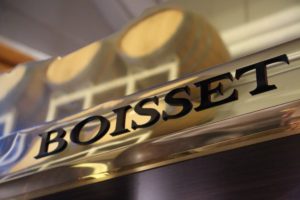 The Crystal Cellar offers a semi-lighted and sultry tasting experience. Fake models hang from a raised catwalk connecting wine tanks, jewelry for sale sparkles in glass cases, glittering chandelier’s hang from above, mirrors fastened to tanks offer special reflections and the fine Baccarat crystal pieces add an element of opulence to this space. And it is here you might be able to purchase your very own smiling Jean Charles Boisset bobble-head figurine.
The Crystal Cellar offers a semi-lighted and sultry tasting experience. Fake models hang from a raised catwalk connecting wine tanks, jewelry for sale sparkles in glass cases, glittering chandelier’s hang from above, mirrors fastened to tanks offer special reflections and the fine Baccarat crystal pieces add an element of opulence to this space. And it is here you might be able to purchase your very own smiling Jean Charles Boisset bobble-head figurine.
Despite the opulence this is a working part of the winery – during the harvest season, grapes are fermented and processed here. There is no other winery space quite like this in the Napa Valley and we have been told by several employees over the years that workers had to get used to working in such a glamorous space!
The Crystal Cellar focuses exclusively on Raymond Vineyards produced Cabernet Sauvignon wines.
The nearby Barrel Cellar also features a dimly lit environment – but is for more intimate tastings (by reservation) rather than the “open to the public” Crystal Cellar.
Red Room
What is arguably the Napa Valley’s most intriguing tasting salon and “private club” (The Reserve at Meadowood, aside) is the Red Room featuring an opulent used of the color red. Red velvet drapes the walls and ceiling, plush red couches await seductively and borrowing from the theme of the Crystal Room, an impressive crystal chandelier hangs from the ceiling (one of the few objects in this room that is not red).
Originally a member’s only club – it is now accessible for guests by appointment only – to enjoy limited production wines in the comfort of an exceptionally opulent space. Guests may also enjoy bottle service including a variety of Cabernet Sauvignon and also sparkling wine.
Corridor of Senses
This unique interactive exhibit contains a row of objects for guests to touch and smell representing texture or smells commonly found in wines. Particularly of interest are the smell displays – some of the most prominent smells in wines are isolated and available for visitors to guess their identities.
Aromas such as raspberry, coffee, truffles and much more are lined up along this corridor. Simple press the sniffers and inhale. However, don’t look at the ID above the display – try to guess before checking. Correctly identifying some of these smells can be extremely challenging.
Theatre of Nature
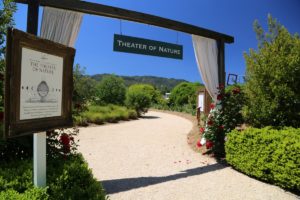
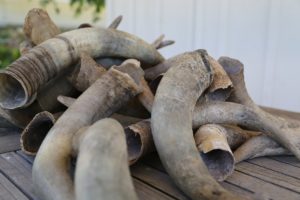 This two-acre outdoor garden highlights Biodynamic farming (the largest live educational exhibit of its kind in Napa Valley). In the spirit of the word “theatre” visitors actually enter the garden through a dramatic white canvas curtains shielding the pathway. Equally dramatic are the stark white chairs plopped on the lawn (that appear to be from another era) located next to the Theatre of Nature with the word “Raymond” as the backdrop. Needless to say, this is a very popular photo spot especially for passengers exiting tour vans or buses.
This two-acre outdoor garden highlights Biodynamic farming (the largest live educational exhibit of its kind in Napa Valley). In the spirit of the word “theatre” visitors actually enter the garden through a dramatic white canvas curtains shielding the pathway. Equally dramatic are the stark white chairs plopped on the lawn (that appear to be from another era) located next to the Theatre of Nature with the word “Raymond” as the backdrop. Needless to say, this is a very popular photo spot especially for passengers exiting tour vans or buses.
As visitors walk through the garden on the rock path, signs provide education about types of plants on site, types of cover crops used in the vineyards, trellising techniques, a sample of various soils found at Raymond vineyards, composting and other practices and benefits of Biodynamic farming. One may hear the goats or the chickens before seeing them; these animals are kept in pens next to the garden.
Soon after purchasing Raymond Vineyards – Jean-Charles started converting the 90-acre estate property to organic and bio-dynamic farming practices. In regard to this, numerous vines were replanted following the change in ownership. And the 100% of the winery’s energy needs is provided from solar cellars on site.
Winery
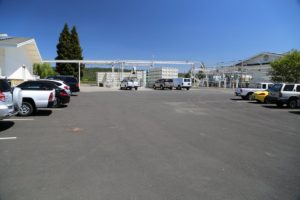 This is one of only few wineries located off of Zinfandel Lane; it is located just a few miles south of St. Helena. Several small buildings are on the property; the one closest to the parking lot that looks like a 50’s style ranch house contains the Tasting Salon, Crystal Room, Barrel Room and the dramatic Red Room.
This is one of only few wineries located off of Zinfandel Lane; it is located just a few miles south of St. Helena. Several small buildings are on the property; the one closest to the parking lot that looks like a 50’s style ranch house contains the Tasting Salon, Crystal Room, Barrel Room and the dramatic Red Room.
In the early 1990s additional barrel storage and winemaking facilities were constructed. With extra space in the actual winery Raymond originally opened this up to number of smaller wineries. These “custom crush” clients were producers who did not own physical winemaking equipment, rather they rented space. These producers had access to state-of-the-art winemaking equipment. At one point, Raymond even provided a full-time consulting winemaker for their custom crush clients.
While no longer offering custom crush services for clients, the winery is used for both producing the Raymond wines and a limited number of wines from some of the other Boisset owned properties in Napa or Sonoma.
Select Wines
A tasting includes a flight of current release wines including either reds only or a sampling of both red and white wines. As of our latest update to this review, Raymond Vineyards produces wines bottled under a variety of unique labels (at least 9 different brands). While offering a wide diversity of wines – their focus is on Cabernet Sauvignon.
The 2015 Raymond Vineyards Rutherford Merlot District Collection (100% varietal) offers darker cherry notes, raspberry, brown chocolate and some toasted oak (the oak influence is more pronounced on the bouquet than on the palate). Very balanced offering with earthy tannins, features a darker finish with notes of dried tobacco leaf. Lingers with some spices including toasted cedar and some oak influence. Shows some structure but with tannins that feel fairly soft. Easy drinking. Unfortunately, this section of the vineyard has been replanted to Cabernet Sauvignon, so this particular wine is no longer produced.
The 2016 Raymond Vineyards District Collection Oakville Cabernet Sauvignon spends 18-20 months in French oak of which 55% to 60% is new. Grown on a vineyard site on the eastern lower slopes of the Vaca mountain range in Oakville. Medium to darker purple in color – offers very pretty aromatics, a nice interplay between both fruit and oak influence with dried rose petal, blackberry, and dessert spices. Plenty of fruit shows on the bouquet but not as ripe as one might think coming from this warmer weather part of Oakville. Darker cherries lead to a lovely textural finish with tannins that are rounded with medium grip. Very balanced.
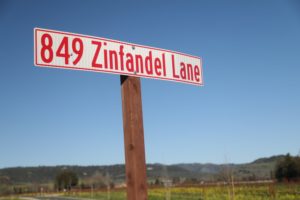
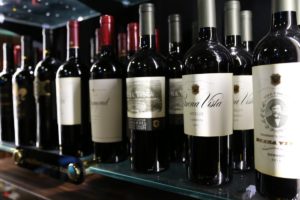
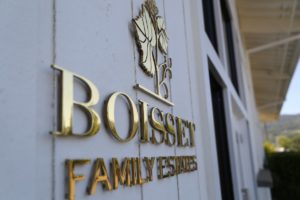 The 2016 Raymond Vineyards Rutherford Estate Cabernet Sauvignon District Collection offers sweet aromatics including ripe dark cherry, baking spices and a hint of Graham Cracker. A showcase of fruit but is not overripe. Also, a hint of mushroom and menthol on the bouquet. Juicy across the palate with a sweetness of fruit – anchored by dusty, well-defined tannins. Mouthwatering on the finish while one simultaneously feels the structural grip. Plenty of fruit but not out of balance. Shows more acidity than the 16′ Rutherford Estate Cabernet Sauvignon. The vineyard site for this is on the estate property just south of the actual winery.
The 2016 Raymond Vineyards Rutherford Estate Cabernet Sauvignon District Collection offers sweet aromatics including ripe dark cherry, baking spices and a hint of Graham Cracker. A showcase of fruit but is not overripe. Also, a hint of mushroom and menthol on the bouquet. Juicy across the palate with a sweetness of fruit – anchored by dusty, well-defined tannins. Mouthwatering on the finish while one simultaneously feels the structural grip. Plenty of fruit but not out of balance. Shows more acidity than the 16′ Rutherford Estate Cabernet Sauvignon. The vineyard site for this is on the estate property just south of the actual winery.
The 2016 Raymond Vineyards Spring Mountain Vineyard Cabernet Sauvignon is darky ruby in the glass with a bouquet that has some distinctive character. It is earthy, shows mushroom notes, black licorice, plum, wood spices and a 5-star spice component. Slightly savory. Looking for a fruit forward Cabernet Sauvignon – this is not it. Shows distinctive flavors of blackberry and plum – plenty of dark fruit and is well layered across the palate. Offers some white pepper and gentle textured somewhat chalky tannins. A beautiful wine that has lots of life ahead of it.
Rooted in the Raymond Vineyards Private Reserve wine, Generations evolved in the 1990s by the Raymond family as a single vineyard Cabernet Sauvignon. After the change in ownership, the Boisset family continued to produce this wine. Starting in 2012 their winemaker decided to move away from single vineyard sites and also 100% varietal Cabernet Sauvignon. Today it can be 100% varietal but often has a tiny bit of Petit Verdot in the blend.
The 2017 Raymond Vineyard Generations is 97% Cabernet Sauvignon from vineyard sites in St. Helena, Yountville, Oakville and the Stags Leap District – plus 3% Petit Verdot. Well extracted – this wine spent 43 days of extended maceration – and along with the phenolics contributed from the Petite Verdot, shows inky dark almost purple in color. The fruit shows more than the oak on the bouquet with a hint of soil deep in the aromatics. Ripe aromas of blackberry and Santa Rosa plum. A fruit sweetness. Flavors including blackberry and a lingering note of plum and old cedar. Balanced, richly flavored – certainly a crowd favorite. Both fruit and tannins persist for some time with the tannins showing slightly dusty and rounded in texture. No harsh edges here.
The 2004 Raymond Vineyards, 100% varietal Rutherford Cabernet Sauvignon is worth seeking out. There are reasons people discuss the merits of Rutherford dust. This wine has it, with initial aromas offering up notes of crushed rock, mineralities – a noticeable dustiness intermingled with fruit. The mouth feel is smooth and supple complemented by ripe layered fruit including blackberry and black cherry. A singular thread of desert spices from the oak show on the finish.
This is one of their best quality to price point wines (which is generally only available through distribution) is the Raymond Vineyards Reserve Cabernet Sauvignon – quickly eye catching when one spots its velvety label (yes, it is soft to the touch).
Dessert wine lovers be sure to try the late harvest Chardonnay, called “Eloquence”. This wine is not made every year and is made from some of the ugliest grapes one will ever see. If you’ve never seen advanced stages of grapes covered in botrytis cinerea, you are not missing much! This type of mold must be present on grapes for making this type of wine. Looking like rotting fruit, how can these grapes produce a wine that tastes so incredibly good?!
The 2005 Raymond Vineyards Eloquence is a rich wine both in sugar, flavor and alcohol. Tropical aromas including honeysuckle are found on the bouquet – these tropical notes also continue onto the palate. Shows flavors of apricot, raisin and a satiny honey caramel nuance towards the finish. It even came in its own unique box – certainly appropriate for a wine named so eloquently. Dessert lovers may also be interested in the Raymond Vineyards late harvest Sauvignon Blanc. As of our latest update to this review, Raymond Vineyards no longer produces either of these dessert wines.
Winemaker for a Day
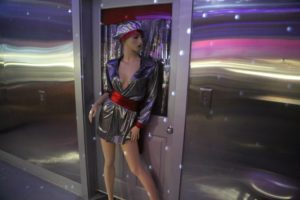 This is Raymond’s most popular experience; it lasts about 90 minutes and is available by reservation only. Visitors get to play the part of a “mad scientist” while creating their own wine blends, one of which will be bottled. After guests reserve this experience, they will submit an image and a label name via email – which will be printed ahead of time. Held in the old Raymond Winery lab – this room looks nothing like the original lab. The entire room is lined with metal from the walls, ceilings and counter tops. Guests even dress up in shiny silver lab coats to match the interior. While a number of scantily clad mannequins decorate the tank room outside – only one wayward model mannequin has made her way inside the lab room.
This is Raymond’s most popular experience; it lasts about 90 minutes and is available by reservation only. Visitors get to play the part of a “mad scientist” while creating their own wine blends, one of which will be bottled. After guests reserve this experience, they will submit an image and a label name via email – which will be printed ahead of time. Held in the old Raymond Winery lab – this room looks nothing like the original lab. The entire room is lined with metal from the walls, ceilings and counter tops. Guests even dress up in shiny silver lab coats to match the interior. While a number of scantily clad mannequins decorate the tank room outside – only one wayward model mannequin has made her way inside the lab room.
The room can seat up to 16 although they have hosted groups up to 60 with larger groups using parts of the adjoining tank room. Especially popular with couples – but also fun for corporate events.
Guests are assigned to a lab station and provided four small glass bottles of wine; all are barrel samples of red Bordeaux varieties. These are the ‘spices’ if you will that will be used to create various blends. One bottle will contain an unoaked Cabernet Sauvignon, another an oaked version and then select other red varieties – perhaps Merlot and Cabernet Franc. It is recommended to pour and then taste small samples of each of these wines before creating any blends.
Two of the most important aspects of this ‘edutainment’ as our host described the experience are: there is no such thing as a perfect blend, so don’t try to over think things. Since this is a blending class, any wine chosen for bottling must have at least two of the provided wines in the blend. And certainly, a third ingredient – simply have fun!
Once the host stops talking, the real fun begins. Music is turned up, perhaps Sitting on the Dock of the Bay by Otis Redding or Sugar Sugar by the Archies will get everyone moving. Graduated cylinders are used for measuring out percentages of the samples while pipets are used for more precise measurements. our host indicated that sometimes in the afternoon guests will often use the pipets for drinking samples rather than measuring samples.
Once a desired blend has been created guests will need to provide the percentages to the host for bottling. Then guests will use the hand corking and encapsulation machines in a side room before placing the front label on the bottle. Now it’s ready for some social media. And allow up to 5 years for aging or simply drink it before you even leave the world-famous Napa Valley.
One bottle is included in the ticket price – but guests may also order more of their blend at this time or in the future (in 12 bottle/case increments). Want to read more about this experience in addition to our notes here? We sent one of our writers to experience this firsthand, years ago. And she wrote a nice article on our travel site here: Her review is here.
JCB Lounge
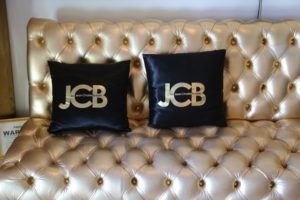 Along with JCB lounges in San Francisco at the Ritz-Carlton Hotel, Yountville (including the Atelier and the JCB Salon Privé) and St. Helena, there is also one here located in the Raymond’s old pool house in the ‘back’ of the property across from the Raymond’s old primary residence. Walk in guests often won’t know about this lounge space; that is because it is generally only available for private tastings through prior appointments. Like Jean Charles’ other lounges, this one is about elegance, flamboyance and surprises. One such surprise is the sparkling ‘machine gun’ – which apparently will shoot out sparkling wine. Best used on super special occasions. Wines, perfumes, jewelry and lavish decorations all make for a memorable experience. For our readers looking for more information and photographs about these other JCB lounges – view our notes here.
Along with JCB lounges in San Francisco at the Ritz-Carlton Hotel, Yountville (including the Atelier and the JCB Salon Privé) and St. Helena, there is also one here located in the Raymond’s old pool house in the ‘back’ of the property across from the Raymond’s old primary residence. Walk in guests often won’t know about this lounge space; that is because it is generally only available for private tastings through prior appointments. Like Jean Charles’ other lounges, this one is about elegance, flamboyance and surprises. One such surprise is the sparkling ‘machine gun’ – which apparently will shoot out sparkling wine. Best used on super special occasions. Wines, perfumes, jewelry and lavish decorations all make for a memorable experience. For our readers looking for more information and photographs about these other JCB lounges – view our notes here.
JCB offers tasting flights inside the lounge featuring wines from the portfolio of the Boisset Collection (including some of their most premium offerings) – light snacks may also be paired with the wines. This lounge can also be used as a private event space for small groups. Tastings are hosted at a table or if guests prefer a more casual environment, they can take full advantage of the comfortable sofa.
Other Notes
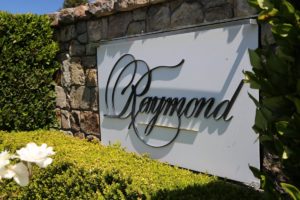
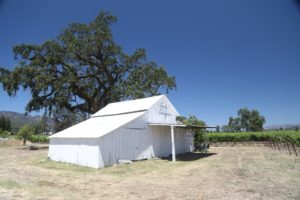
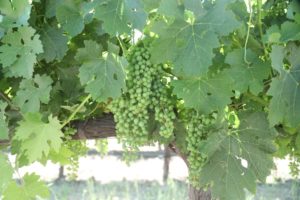 Private tastings, blending seminars and winery and vineyard tours must be reserved ahead of time; a tour involves seeing the actual winemaking facilities and barrel room (its huge) as well as provides information about their rich history. Private tours end with a tasting in the main tasting salon. Private events can be reserved and are held on the grounds of Roy Raymond’s original home which now also hosts wine club functions. Raymond is distributed in select markets in all 50 states.
Private tastings, blending seminars and winery and vineyard tours must be reserved ahead of time; a tour involves seeing the actual winemaking facilities and barrel room (its huge) as well as provides information about their rich history. Private tours end with a tasting in the main tasting salon. Private events can be reserved and are held on the grounds of Roy Raymond’s original home which now also hosts wine club functions. Raymond is distributed in select markets in all 50 states.
Like at Boisset’s De Loach Winery in neighboring Sonoma County, Raymond used to offer a “Barrel to Barrel” service. These are miniature wine barrels (real wood) with a thick plastic bag inside containing 3 liters of wine. A wine spigot is even built into the barrel. The advantage of this storage, other than the “cool” factor is the larger volume of wine, once open the wine lasts much longer than a 750ml bottle – up to 6 weeks.
This is one of a select few wineries in Napa Valley to be associated with the Napa Valley Wine Train; special wine train packages include a visit and tour of Raymond Vineyards in conjunction with a ride on the Napa Valley Wine Train.
At one time visitors to the valley could continue the “Raymond Experience” outside of the winery. For a while, Mount View Hotel & Spa in Calistoga dedicated one of their rooms to Raymond Winery (suite 207). Not surprisingly, Raymond wines were only served to guests who stayed in this room. And of historical record, at one point, Raymond was planning to move into a tasting space on the ground floor at the Mount View Hotel and even made some interior modifications, but their plans never materialized.
In 2022 Raymond Vineyards partnered with American Truffle Company to grow Périgord black truffles on the Raymond property. This same year Raymond hosted the first ever Collective Napa Valley live barrel auction; this is the Napa Valley Vintners program which replaced the annual Auction Napa Valley event.
Avenue of Senses
And old timers will remember entering Raymond Vineyards off of Zinfandel Lane. But in 2021, after several years of trying to change their entrance, a driveway was finally built leading to the winery directly from Highway 29 with the grand opening celebration taking place on May 1, 2021. This was also the same date for their Generations vintage release party. This driveway passes through vineyards and is considerably longer than their original driveway, although note that the original driveway is still functional and being used.
In advance of hosting the Collective Napa Valley event in early June 2022, Raymond Vineyards beautified their driveway with the addition of various signage and select landscaping. The old white house one sees to the left when driving in was part of the Ticen Family Vineyard which is also owned by Boisset.
In November 2023 Raymond unveiled what is perhaps the most dramatic piece of art in Napa Valley, the eye sculpture by Tony Tasset located along the Avenue of Senses. This prominent piece is made of resin and fiberglass held together by a steel frame. The eye is a re-creation of Boisset’s right eye.
For more information or to join one of their select wine clubs, visit: www.raymondvineyards.com Raymond also operates a small winery on site devoted to dogs and dog lovers – but with the tastings for the owners. And for the full lineup of wineries owned by the Boisset Collection both in California, France and beyond (and this is a list we have noticed does not remain static over time, as it often changes based on wineries being bought and sold), visit: www.boissetcollection.com
OTHER CALIFORNIA JEAN CHARLES BOISSET OWNED OR LEASED SPACES
We highlight only a *few* of the many JCB owned spaces and places in California or internationally below. The parent company is the Boisset Collection. As of our latest notes to this review, the Boisset Collection owns 19 different brands or physical wineries in California, one in England, one in India and 17 in France. And Casa Obsidiana, a Tequila brand based in Mexico but with limited distribution within the U.S. To check the current list of brands under the Boisset Collection, please visit: www.boissetcollection.com/brands
SELECT NAPA VALLEY SPACES
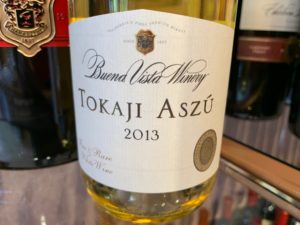
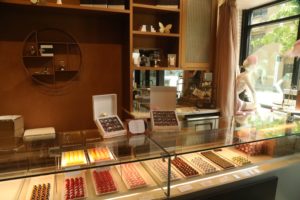 Chateau Buena Vista Tasting Room, Napa
Chateau Buena Vista Tasting Room, Napa
This tasting salon is located on the first floor of the two-story, 20,000 square foot historic Gordon Building at 1142 First Street in downtown Napa. This tasting space is opened in early March 2022. This space is located in the heart of downtown Napa with numerous other tasting rooms and restaurants within an easy walk.
This building was originally constructed in 1904 as the Hayes Theatre but it burned down. The current building dates from 1929 and then a second section added in 1935. This building is on the National Register of Historic Places; its namesake is from its builder, Samuel Gordon. The exterior Spanish Colonial Revival style certainly stands out among other nearby downtown buildings.
It was damaged during the August 2014 earthquake and later underwent significant restoration which was completed in early 2020. In 2022 the building won a Preservation Design Award for Rehabilitation from the California Preservation Foundation.
Select tastings feature champagne, several different types of caviar and chocolate. The focus of the wines represented are from Buena Vista Winery in neighboring Sonoma County including wines bottled under Chateau Buena Vista which are all Cabernet Sauvignon wines from Napa Valley. Visitors can order wines by the glass or by bottle or choose from select flights.
Buena Vista is the oldest commercially producing winery in the state of California, having been founded in 1857 by the Hungarian immigrant Agoston Haraszthy de Mokesa. A bust of this influential and eccentric man is housed inside the tasting salon. From this satellite location, the drive to Buena Vista Winery in neighboring Sonoma County is about 25 minutes.
A mezzanine level is also available for guests. Earth and Sky Chocolates maintains a space in the front of the tasting room and sells a variety of chocolate directly to visitors and some of their chocolates are used in the Chateau Buena Vista wine pairings. Without a background whatsoever in chocolate, owner Robbie Schmidt purchased this chocolatier in early March 2020. She also maintains a kitchen and a retail outlet in the train cars at the Calistoga Depot.
Select Wines
The 2019 Chateau Buena Vista Diamond Mountain Cabernet Sauvignon is noticeably inky dark ruby in the glass; its aromatics are earthy, dark and include a sweet thread of black licorice, blackberry and cedar. As the wine breathes offers aromas of chocolate and darker spices. The mouth feel is pleasing with initially a slightly creamy texture. We wrote ‘dark’ several times in our tasting notes referring to the wine’s flavors. Take the darkest fruit you can imagine; that is the palate of this wine. The tannins are robust and slightly chewy but not as aggressive as we anticipated, especially for such a young wine. Lingers with flavors of plum, wood and grape tannins and some savory notes.
The 2019 Chateau Buena Vista Rutherford Cabernet Sauvignon is medium to dark ruby in the glass; the bouquet immediately envelopes the glass with darker berry aromas, plum and notes of old cedar which become more pronounced as the wine evolves. And deeper into the aromatics are notes of old parchment paper. This wine is already very balanced for being so young. Offers more red fruits than darker fruits on the palate including red cherry. There is a noticeable grip of tannins, but they are not heavy or coarse in their textural feel. Lingers with some darker spices including pepper along with a red fruit driven brightness of acidity.
The 2013 Buena Vista Tokaji Aszu 6 Putanayos is a beautiful wine; we tasted this nearly 9 years post vintage and it certainly can last decades more. It is dark golden in the glass with sweet aromatics with both ripe fruit and floral undertones including honey, apricot, peach and some citrus blossom notes. It is sweet by not cloyingly so, tempered by a bright backbone of acidity. The mouth feel is immediately noticeable on the entry; it is creamy, rounded and with an oil-like viscosity. Offers flavors of mango, papaya, nectarine, peaches preserved in syrup, passion fruit and apricot. The finish is long with a noticeable brightness that livens the palate. While tasting this wine we reflected on its origins; it was grown, produced and bottled in Hungary for California’s oldest winery, owned by a Frenchman available at their tasting room in downtown Napa.
Calistoga Depot
Jean Charles acquired this historical property in 2021; while Boisset Collection owns the property, they do not oversee the operations of the businesses here. This was not his first effort in Calistoga; years ago a small tasting space inside the Mount View Hotel was under development to showcase some of his wines, but plans ultimately fell through. At the time of the depot purchase, much of the inside was already vacated. The interior of the main building underwent significant renovation over a span of several months in 2022; Depot Provisions opened in June 2022 but closed permanently at the end of 2023. This space currently features Nova Terra Kitchen & Creamery, a plant based café and restaurant featuring locally grown and sourced items
This depot was founded in 1868 and is where the railroad tracks running through the valley used to terminate in its most northerly location. Unfortunately, these train tracks were short sighted removed in the 1970s and currently terminate on the grounds of Charles Krug Winery.
The main hall of the original train depot is home to the Depot Distillery and features locally distilled spirits and craft cocktails (opened summer 2024). There is plenty of room to lounge here including upstairs in several semi private spaces. The feel is very old western; the main bar is lined with shovels, parts of the interior are lined with old barrels and an old piano sits high above the distillery. But the centerpiece is clearly the distillery itself with its two large gleaming copper stills.
The first products were released in 2023 and include a series of limited bottlings, each with unique names such as, The First Millionaire, Fame & Misfortune, Prosperous & Penniless and the The Calistoga Star, all relating to Samuel Brannan. Another brand, Casa Obsidiana is a production of several bottlings including a blanco, reposado and an anejo.
A significant part of the change in ownership involved leasing the old rail cars with tenants. Several places in particular include an old-west style saloon called The First Millionaire’s Saloon, named in honor of Sam Brannan, a Champagne and oyster bar, a Mexican restaurant, a lifestyle boutique and a chocolatier. Informative plaques focusing on local history are located throughout the walkway between the rail cars.
The Depot Brewing Co is located outside in a separate space outside of the Depot offers craft beer brewed on-site. An outdoor seating area next to The Depot features a number of beers on tap including some from regional and national producers. Patrons may enjoy sandwiches from the Depot Provisions and also pizza from the wood-fired pizza oven on site.
Parking is alongside the depot and in the rear, or curbside if available along Lincoln Avenue or in a narrow gravel lots on the east side of the depot. Also of interest is the Napa Valley Vine Trail starts/ends right next to the depot and can be followed in its entirely to the city of Napa.
Depot Provisions
Depot Historic Railcar Shops
Depot Brewing Company
Depot Distillery
Ink House Inn
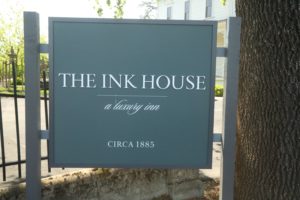
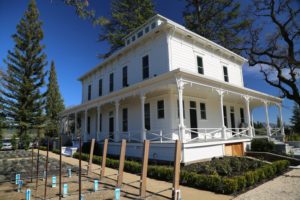
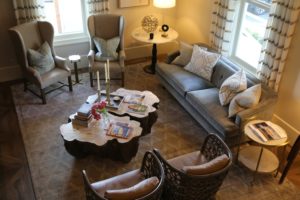 Previous owners, the Casteluccis purchased the historic Ink House and 1.25 acres located just south of St. Helena in 2014 and sold it in 2021 to Jean Charles Boisset and Gina Gallo (who are the current owners). With this acquisition made as a possible quick real estate investment by the Casteluccis, as they began to dig through the layers of history, they realized they had something special on their hands. The house and property are listed on the National Register of Historic Places; the home was built in 1885 by Theron H. Ink for a cost of $10,000. The uppermost cupola was removed in the 1940s but has since been added back to the house. The original well on site was built by Chinese laborers.
Previous owners, the Casteluccis purchased the historic Ink House and 1.25 acres located just south of St. Helena in 2014 and sold it in 2021 to Jean Charles Boisset and Gina Gallo (who are the current owners). With this acquisition made as a possible quick real estate investment by the Casteluccis, as they began to dig through the layers of history, they realized they had something special on their hands. The house and property are listed on the National Register of Historic Places; the home was built in 1885 by Theron H. Ink for a cost of $10,000. The uppermost cupola was removed in the 1940s but has since been added back to the house. The original well on site was built by Chinese laborers.
An article about Inkwell House from the Napa Register, dated September 14, 1963, indicates, “Perhaps someday Napa Valley’s Inkwell House will be the attraction it deserves to be, in the way the early American homes of New England are, as restored by the Colonial Dames”. Those wishful thinking words came true some 50+ years after this article was published. After several years of carefully restoring the home with the help of Howard Backen (died 2024) at Backen, Gillam & Kroeger Architects along with the beautiful interior design work of Sarahliz Lawson Design, the Ink House opened in January of 2018. Sarahliz’s work has been featured in a variety of publications including Luxe Magazine, Conde Nest Traveler and Travel and Leisure; this was her first project with Backen, Gillam & Kroeger Architects.
Theron was born in New York in 1831, was a schoolteacher for several years before migrating across the country on horse and wagon in 1852. He worked gold mines at Coloma Bar before settling in Napa Valley in 1853, working on Boon Fly’s Farm on Carneros Creek in what is now the Carneros District of southern Napa Valley. From being a schoolteacher to a prominent landowner in northern California happened fairly quickly. His land holdings were significant; at the height of ownership, he owned approximately 10,000 acres in Napa Valley primarily in Pope Valley), Lake County and Marin County and raised a variety of livestock. He also served in public office and was elected to the Board of Supervisors in the Yount District for three terms.
He owned vineyards in Rutherford and St. Helena and eventually built a winery in 1886 which had a capacity of 150,000 gallons. He also owned a sizable livery stable in St. Helena. Ink Grade Road on Howell Mountain (and Old Ink Grade Road) are both named for Theron Ink, in homage to the road he used to use to travel between his property in Pope Valley and properties on the main floor of Napa Valley. And in homage to his vineyard holdings and winemaking, the Ink Grade brand was started by Gaylon Lawrence rooted in a vineyard on Howell Mountain that originally was owned by Theron Ink.
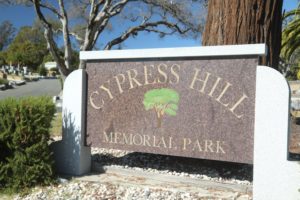
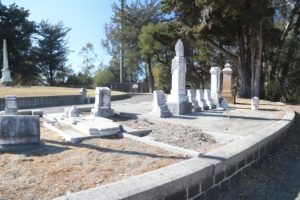 Ink died in 1893 in what was the Crystal Springs Health Resort on Howell Mountain and is buried in at Cypress Hill Memorial Park in Petaluma in neighboring Sonoma County. His wife Harriett P. “Jane” Goodrich outlived her husband by nearly 40 years and died in 1932.
Ink died in 1893 in what was the Crystal Springs Health Resort on Howell Mountain and is buried in at Cypress Hill Memorial Park in Petaluma in neighboring Sonoma County. His wife Harriett P. “Jane” Goodrich outlived her husband by nearly 40 years and died in 1932.
This property came with a coveted permit to operate as a Bed & Breakfast. The Ink House features 6 unique and luxurious rooms including the Elvis Room upstairs, where Elvis Presley stayed in 1960 during the filming of Wild in the Country (the inn was a private home at that time). If Elvis were alive today, he wouldn’t recognize this room with its tidy era upgrades – although he would recognize the homage to himself hanging on the wall. This visually stunning space offers plenty of windows surrounding the room offering 360-degree views of the valley. Other named rooms pay tribute to people and place including the Theron Room, Harriet Room and the Helios Room.
And during his filming of this movie, Elvis also stayed at what was Casa Lual, built in 1953 and named after the first owner’s daughter Lucille and husband Allen. This property at 200 South Coombs Street is now the Wine Country Lodge.
The Inn sits on the old Helios Ranch (originally 50 acres) and used to be site of a duck pond and the grounds used to often flood during heavy rains. During Ink’s ownership a drainage system was implemented. The grounds are carefully manicured, with even with a small demonstration vineyard planted on site, a fruit orchard and 200 lavender plants.
The Ink House has had a number of owners over the years including at one time Napa Valley College president Dr. George Clark and his wife Lois. Subsequent owners included Ruby Kase (of Kase & Ferguson accounting firm) who added numerous antiques to the interior, the Castelucci family and now Jean Charles Boisset and Gina Gallo. Some changes were made since Boisset and Gallo took over the operations including added a ‘wall of Gallo-Boisset family’ photo albums in the Private Collection Room immediately to the right on the first floor as guests enter the inn. Guests are able to purchase select wines from the Boisset Collection housed in wine refrigerator, have open access to a fully-stocked chef’s kitchen and numerous luxury retail items for sale including a variety of candles, wine accessories and Napa Valley or wine related books.
A stay here, simply put is not just time spent in a room, but through various ownership partnerships and connections, is a key to some of Napa Valley’s most unique, coveted and enjoyable experiences and products.
JCB, St. Helena
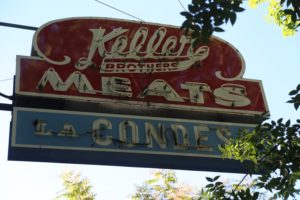 In April 2022, Jean Charles Boisset purchased the Keller Building in downtown St. Helena. This was formerly home to Keller Brother’s Meats, a store that was founded in St. Helena in the 1930s. In the book, Stubbed Toes and Grapevines by Janice E. Pond, she describes visiting Keller’s as a little girl. “We bought most of our meat from Keller’s in St. Helena. Keller’s meats tasted better than any other we ate, except momma’s or gramma’s fresh friend chicken on Sunday”.
In April 2022, Jean Charles Boisset purchased the Keller Building in downtown St. Helena. This was formerly home to Keller Brother’s Meats, a store that was founded in St. Helena in the 1930s. In the book, Stubbed Toes and Grapevines by Janice E. Pond, she describes visiting Keller’s as a little girl. “We bought most of our meat from Keller’s in St. Helena. Keller’s meats tasted better than any other we ate, except momma’s or gramma’s fresh friend chicken on Sunday”.
The building is located at 1320 Main Street. Parking is available curbside on Main Street (if you get lucky), side streets or within a short walk, an open air small parking lot on the other side of Main Street next to Money Way. From stories we have heard, Ernie used to offer kids pieces of beef jerky followed by a line something like, “that jerky is really good, now go tell your parents”! The original sign is still hanging despite the business having long since closed. Later the Kellers sold the business to Ernie who ran Ernie’s Meat Department for many years.
The building has seen numerous tenants over the decades, more recently it was home to La Condesa Mexican Restaurant and the St. Helena Visitor’s Center. This space has been converted into a JCB led food and wine destination. JCB St. Helena packs a lot into a fairly small and narrow space. One might be initially overwhelmed by the dazzle and the opulence but take some time to slowly look around and the visual details will come into ‘focus’.
One of the visual highlights worth noting is the youthful image of JCB sporting long hair, wings and four arms and four legs. Our interpretation of this painting is it represents JCB as a sex symbol, his French heritage, his creative efforts in bridging the gap between France and the U.S. and his uncanny ability to seemingly be everywhere all at once, a necessity in regard to his multitude of accomplishments and businesses.
A menu is located in a glass frame on the exterior of the building at the entrance. Its enticing selection includes a diversity of wines, both from JCB as well as a rare for Napa Valley selection from Burgundy. A number of small plates can be paired with the wines including JCB caviar, salmon, Foie gras, charcuterie and chocolates from local chocolatier Earth & Sky. Bites are prepared by a guest chef program in which different chefs rotate each month.
Flights can be ordered by region, variety or sparkling, white or reds. And pours are available as samples, by the glass or by the bottle. Other fine products for sale include jewelry, fragrances and various items of decor. Come here to be dazzled, see and be seen. This space opened in February 2024.
Oakville Grocery, Oakville
See our extensive notes under our review of 1881 Wines on this website.
Oakville Wine Merchant + Museum
See our extensive notes under our review of 1881 Wines on this website.
JCB Lounge, Yountville
See our extensive notes under our review of JCB Lounge Yountville on this website.
Elizabeth Spencer, Rutherford
See our extensive notes under our review of Elizabeth Spencer on this website.
SELECT OTHER SONOMA COUNTY PLACES AND SPACES
Buena Vista Winery, Sonoma
Only a 10-minute drive from downtown Sonoma, this historic winery is California’s oldest winery, dating from 1857, although there were earlier wineries in the state including in Los Angeles County, but these are no longer in business. Patchett Cellars was also founded in 1857 in the city of Napa. The founder of Buena Vista Winery, Hungarian immigrant Agoston Haraszthy, employed Charles Krug at one point – the founder of Napa Valley’s oldest still existing winery. He also oversaw 150 Chinese laborers who dug by hand three caves and built the stone winery buildings in front of the caves.
The Press House was built in 1862 and was in use until 1878 when a combination of phyloxxera and an economic depression shuttered the operations; no wine was produced on the property until the 1940s. Winemaking operations were conducted by a steam engine housed in a nearby wooden building. The Chateau Buena Vista building (the Champagne cellars) was built in 1864. Both buildings are still standing and were completely restored and renovated in 2012. If it weren’t for this structural retrofit, engineers estimated that the Napa 6.1 earthquake of 2014 would have destroyed this building.
The wine country fires of 2017 also burned on the property including very close to the old winery buildings. They were saved when firefighters lit a backfire and used water from a tank on site to fight the flames.
In 1943, Frank Bartholomew purchased Buena Vista in 1943 along with 600 acres as a present for his wife and Antonio at a state auction. They brought in winemaker André Tchelistcheff initially in a partnership but later as a consultant, replanted the vineyards and began producing wines on the property for the first time in more than 60 years. Their first vintage was in 1949. They sold Buena Vista in 1968 to Young’s Market, an alcohol and beverage distributor (owned by Republic National Distributing Company since 2022).
In 1980, the Bartholomew’s created the Bartholomew Foundation, a nonprofit that owns and oversees 375 of their original 500 acres. This space is the open-to-the-public Bartholomew Park located about a 10-minute drive from Buena Vista. The park is home of Bartholomew Estate Winery (income from wine sales help support the park) and a beautiful villa dating from the early 1990s – a replica of Haraszthy’s original home. The park is also known for its hiking trails and horse riding offered through Sonoma Valley Trail Rides.
Parking is in a gravel lot with access down a paved path/road approximately 600 feet in length. Visitors will walk alongside “history hill’ a well signed side of a hill highlighting some of wine’s most famous personalities along with their select cutout likenesses. After historical signs, visitors will pass by a small vineyard block on the hill next to the entrance; this is planted to Furmint, a white variety from Hungary.
Sometimes golf carts are available to bring passengers from the parking lot to the winery – handicapped passengers can be dropped off in a small parking lot access via the paved path.
“Agoston” is often wandering the grounds dressed in period clothing, talking with visitors and for select experiences, speaking to groups about his life and accomplishments. He met his untimely death in 1869 in a Nicaraguan river while exploring the jungles of that country.
Jean Charles first visited Chateau Buena Vista when he was 11 years of age in 1981. This was the first winery he visited in the U.S.
De Loach Vineyards, Sonoma
De Loach Vineyards is located at 1791 Olivet Road between River and Guerneville Roads, just west of Santa Rosa – around a 12-minute drive from western Santa Rosa. The winery has consistently been voted one of the top wineries in Sonoma County. Production is significantly larger than nearby wineries on or near Olivet Lane; they have a sizable national distribution including at Costco. De Loach is primarily known for their Pinot Noir.
De Loach was founded by Cecil De Loach, who also started the nearby Hook & Ladder Winery. Tastings are conducted inside or outside on the patio at the tasting room in the ‘front’ of the property or more private tastings are hosted in the estate house in the back of the property. All tastings are seated. One will spot visual glimpses of Jean Charles’ “handprints” on the property but not to the opulent extent at Raymond Vineyards or at his lounges.
Oakville Grocery, Healdsburg
See our extensive notes under our review of 1881 on this website. Oakville Grocery in Healdsburg unfortunately closed permanently in late 2023.
SELECT FRANCE OWNED PROPERTIES
Jean-Claude Boisset
The roots of the Boisset wine empire date back to 1961 when Jean-Charles’ father, Jean-Claude Boisset (the son of teachers) and his wife Claudine began to sell wine as negociants in Burgundy – purchasing cases of finished wines and then initially reselling them to friends and family. Their model has evolved over the decades including buying finished wines and bottling and then selling it as their own, purchasing vineyard land and purchasing existing wineries. And when they purchase existing wineries, despite being under the Boisset Group ownership, they keep each property separate from one another and each property has their own dedicated winemaker.
In 1964 the Boisset’s acquired their first vineyard, Les Evocelles in the Gevrey-Chambertin commune (see our photos below from our visit to this site).
Jean-Claude Boisset Winery, Les Ursulines (the mothership) is in the tiny village of Nuits-Saint-Georges in the iconic Côte de Nuits wine region (dates back to the year 1,000) located about halfway between Beaugne and Dijon. Nuits-Saint-Georges is worth spending some time in, wandering the streets among the historic buildings including several old churches, a visit to Cassissium to learn about black currant and how crème de cassis liqueur is made, a stop at the Nuits-Saint-Georges Museum and also the Imaginarium, offering fun and educational experiences relating to wine (and also contains a boutique for sample and buying wines including from the Boisset Burgundian portfolio).
The winery encompasses both a rich historical story combined with a modern one. This part of France 20,000 year ago resembled parts of Siberia. Over time the region warmed, and soils were deposited from limestone hills via an alluvial fan which covered the region. The first grapevines were planted by Romans. The Ursulines (nuns) settled on what is now home to the winery in 1634; the original house used by the mother superior is still standing including the original wooden timbers inside. A church on site was destroyed during the French Revolution.
The first building constructed during the nun’s occupancy was in 1717. Educating women was a novel concept in those days; this convent built for women, including women who had children. And education was provided for the residents. At its height the convent housed 100 nuns and some 300 students; the convent also owned surrounding vineyards.
Les Ursulines was acquired by the Boisset family in 1983; after the nuns were expelled in 1792, the site was owned by a number of wine businesses. After a major renovation and build out lasting four years beginning in 2014, the new winery was used for the first time during the 2018 harvest (although the first vintage produced at the winery under the Boisset ownership was in 2002). Its design was a collaborative effort shared among a number of individuals including architect, Frédéric Didier (his first winery project) and Geobiologist architect Georges Prat.
Certain wineries around the planet inspire a certain sense of awe when visiting them for the first time. These types of wineries incorporate visually stunning architecture, history and a sense of place. Some that come to mind include Antinori nel Chianti Classico in Tuscany, Château Margaux in Bordeaux and Bodega Colomé in northern Argentina, among others. Jean-Claude Boisset certainly fits within this type of category of winery.
One of the visual highlights from the outside is the vegetal dome (or known as the cocoon) designed by architect gardener, Jean Philippe Poirée-Ville. Its exterior is covered with 1-meter-thick soil and is planted to Chasselas wine grapes. As a result of its design very little energy is consumed and its cooling comes from natural ventilation rather than any air conditioning. From the top of the dome, one has excellent views of the surrounding vineyard covered hillsides and landscape. The top of the dome is planted to a number of different apple varieties.
The ‘nun’s gardens’ are located within the interior courtyard and are a peaceful and spiritual place. Three pieces of art in particular are worth mentioning here; a wood carving into the stump of a tree, an immediately eye-catching sculpture using three metals depicting the legend of Saint Ursula by artist Jean-Charles Detallante and the Armillary sphere fountain designed by Frédéric Didier, with the stone section crafted by Philippe Griot using St-Martin-de-Belle-Roche stones and the metalwork by Albert Herissay.
The inside of the cellar is a magical place built both for function as well as visual attractions. The eye-catching multi-level-stained glass window depicting an image of a grape leaf is the work of artist Gilles Rosvoal from the Atelier Duchemin in Paris. And the ceiling incorporates numerous twinkling lights to mimic the night sky. The inside contains 54 wooden vinification vats, each sized to match various vineyard plots, plus 20 stainless steel tanks. Jean-Claude Boisset primarily produces wines from the Côte de Nuits and Côte de Beaune part of Burgundy (around 40 unique bottlings a year) and source grapes from approximately 40 growers.
The underground stone cellars were built in 1896 and contain three sections with both barrels for recent vintages as well as a remarkable collection of rare and old bottlings including what might be the oldest bottles owned by the Boisset Group, a set of 4 Richebourg bottlings dating from 1865. Part of the modern winery is built over these cellars.
Their wines see a judicious amount of oak during their aging; their white wines are aged in larger 450 liter demi-muids to introduce oak but minimize its effects. Roughly 70% of their production is red wines and 30% white wines. Jean-Claude Boissett tries to minimize the use of sulfur in their wines, even producing red wines made without sulfur added during vinification.
Private tours of the winery can be arranged by appointment, Monday through Sunday. The boutique offers selections of their current release wines and is located within the main lobby and is where the winery tours begin.
Select Wines
The 2021 Jean-Claude Boisset Bourgogne Chardonnay Les Ursulines is medium gold in color; the aromatics offer notes of salted butter, honeysuckle and citrus blossom. Less mineral driven than some of the Burgundian Chardonnays we have tasted. The palate offers a rounded, creamy and somewhat saline texture. This wine features flavors of green apple and a lingering citrusy note including hints of lemon. This wine was aged both in oak and stainless-steel vessels.
The 2020 Jean-Claude Boisset Pouilly-Fuissé 1er Cru Sur La Roche Chardonnay is deep gold in color; the bouquet is pretty, offering sweet floral notes including of jasmine and other tropical flowers along with honeycomb, apricot and a marmalade. Boisset’s Senior Public Relations Officer, Thibult Garin Desvial told us this particular wine is especially popular with wine U.S. Chardonnay drinkers. Like the bouquet, the palate also offers a generosity of fruit including red apple, pear and peach, lingering with a bright mineral rich finish including note of citrus. Drinks very well by itself and is nicely balanced. This wine was aged for 8 months it approximately 40% of the total barrels being new French oak without any racking or lee stirring. The average age of the vines is 80 years old, growing on limestone soils.
The 2018 Jean-Claude Boisset Les Beaugne 1er Cru Aux Serpentieres is pale to medium ruby in color offering sweet aromatics of dried cherry, raspberry and chocolate. The bouquet is a ripe showing, reveling a darker note (light woodsy spice) as it continues to evolve in the glass. The balanced palate shows flavors of red cherry, complemented by textured but nicely rounded light gravelly tannins. Lingers with some dried herbs. The name Serpentieres refers to a grass snake species found here but also is an appropriate name referring to all the windy paths through the vines when they were originally planted.
The 2019 Jean-Claude Boisset Nuits-Saint-Georges 1er Cru “Les Pruliers” is medium to dark ruby in color; the bouquet offers notes of plum, a sweetness of chocolate, dried herbs and white pepper. A thread of spice runs the breadth of the palate and continues to linger on the savory and dry finish. The tannins present themselves with a gravelly texture and persist along with notes of dried herbs, dried tobacco leaf and crushed black pepper. This wine delivers plenty of layers and complexities on the palate. After harvesting, 50% of grapes were destemmed and were fermented whole berry with fermentation occurring in tank. This wine was aged on the lees for 15 months with no racking; nearly 30% of the barrels used during its aging for new French oak. The average age of the vines is 50 years old.
Jean-Claude Boisset’s winemaker for the 2019 vintage, Grégory Patriat calls this vintage legendary due to its rare concentration because of drought causing lower than normal yields.
The 2018 Jean-Claude Boisset Chambolle-Musigny is medium ruby in color; the bouquet immediately offers ripe plum, cherry, violets and a hint of chocolate and mushroom. The palate is very flavorful, juicy with notes of bramble, raspberry and a lingering darker spice note and dried tobacco leaf. The finish is long-lasting, layered with both fruit and tannins sporting a light gravelly texture. A slightly dryness persists on the finish. Based on its character, this wine certainly is age worthy. 50% of the grapes were destemmed and fermented as whole berries. but not crushed (they were left whole) and were gravity-fed into tanks. Maceration lasted a total of 18 days including 5 days of cold maceration (12°C). Fermentation used indigenous yeasts only (no additives such as enzymes or tannins were used). This wine was aged surlie for 16 months in 40% new French oak barrels.
The 2017 Jean-Claude Boisset Pommard 1er Cru Les Arvelets is medium ruby in color; the bouquet offers an elegant union of both fruit and spice components including dried currant, red cherry, some sweeter fruit notes (licorice & cassis) and an Asian five-star note. The palate reveals flavors of cherry, plum and cranberry but without any tartness. The present, slightly dry, but lightly textured tannins anchor a persistent and savory finish. The grapes for this wine were 100% destemmed and then fermented as whole berries. The wine was aged on the lees for 18 months with no racking in 35% new French oak barrels. This particular bottling tends to age quite well.
It is refreshing to taste a wine actually from Pommard as over the years we have tasted numerous Napa Valley and Sonoma County ‘Pommard clone’ Pinot Noirs (identified as such from cuttings Dr. Harold Olmo took from Burgundy to California in the 1940s).
The 2021 Jean-Claude Clos du Vougeot Grand Cru is medium ruby in color; the aromatics show notes of dried rose petal, darker spices including pepper and a forest floor note. Lively, fresh and juicy across the palate, this bottling delivers mouth-watering acidity and flavors including cherry, currant and pomegranate. A tartness like a sour cherry lingers on the energetic finish along with slightly drying tannins and a light note of dried tobacco leaf. The site for this wine encompasses a majority of the vineyard acreage within the commune of Vougeot – which is incidentally the birthplace of Jean-Charles Boisset.
The 2022 Jean-Claude Clos de la Roche Grand Cru (barrel sample) is medium ruby in color; the bouquet offers aromas of cherry, red plums and baseball mitt leather. The palate is dominated by fruits, primarily red including cherry and plum. This is an energetic wine early in its development but already shows well-integrated tannins. It lingers with flavors of sour cherry and cranberry. This wine will spend two years aging in entirely 100% new French oak barrels. The vineyard site is in the commune of Morey-Saint-Denis.
And after tasting several 2022 Beaujolais nouveau bottlings soon after their release including one from Jean-Claude Boisset, we can say this was a particularly good year for these wines. And also highly recommended is their bottling of Aligoté, a white wine we tried from several producers in Burgundy but to the best of our knowledge is only being grown by one producer in Napa Valley (Young Inglewood).
—
Jean-Claude Boisset also participates in the annual Hospices de Beaune Wine Auction, always held the third Sunday of every November, the world’s oldest charity wine auction (dates from 1862). The event includes not only the main auction, but also the Wine Sale (wine tastings, gourmet food stalls on the streets), gala dinners, special industry tastings, open house events at the domaines and other wine related activities.
Total production each year is around 300,000 bottles (equivalent to 25,000 cases). For more information, visit: www.jeanclaudeboisset.com
Vougeot
This tiny commune/village is the birthplace of Jean Charles Boisset and also where Jean-Charles maintains a personal residence. It is located about halfway between Dijon and Beaune. Less than 200 people live within the main part of the village which is bisected by one main street. The most prominent building is Château du Clos de Vougeot located among the vineyards in its southwestern fringes. Its namesake is the River Vouge which flows through the village.
The village features several hotels, restaurants and wine producers. One can easily walk the distance of its short main street in about 10 minutes although one will want to take longer than that to slowly absorb the feel and history of this charming town.
Original Vineyard Site, Jean-Claude Boisset
This sloping hillside side is located at the following GPS coordinates: 47° 14’ 11.8 N 4° 57’ 44.9”E. This site was purchased in 1964 by Jean-Claude Boisset and his wife Claudine and is located in Les Evocelles in the Gevrey-Chambertin commune. From the uppermost part of this vineyard, one has excellent views looking over the surrounding landscape. One reaches this vineyard on narrow roads which eventually become dirt/gravel. This property is still owned by the Boisset family.
Incidentally, there are some really good wine supply shops within a few minutes’ drive of this vineyard along the small highway (D122).







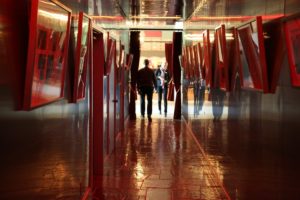
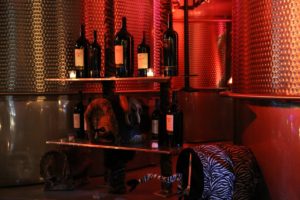
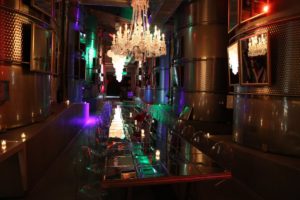
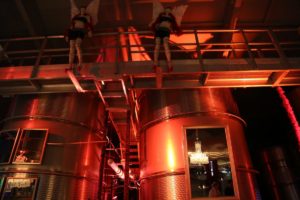
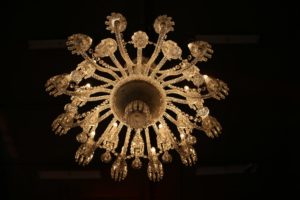
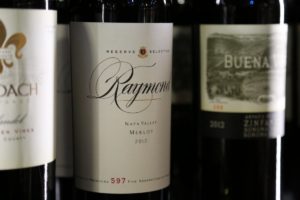
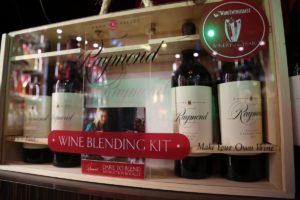
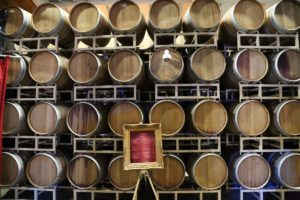
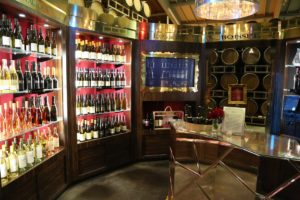
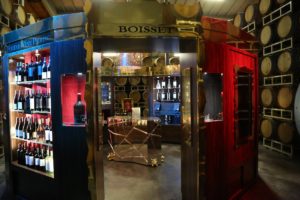
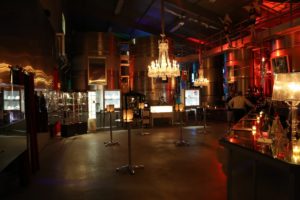
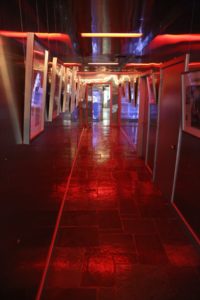
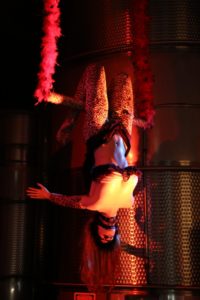
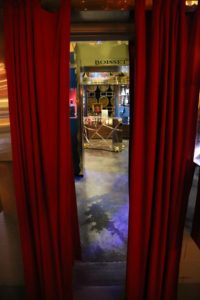
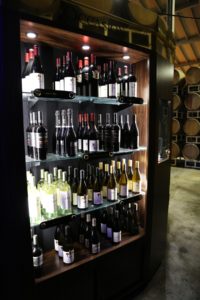
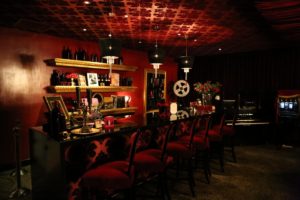
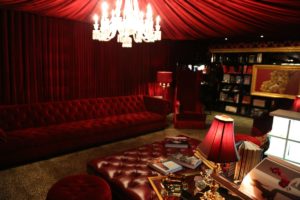
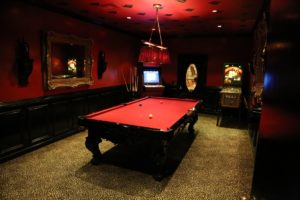
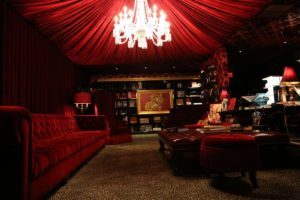
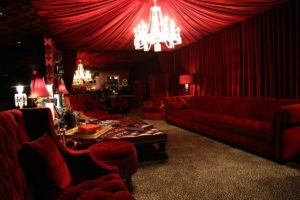
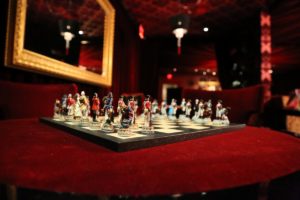
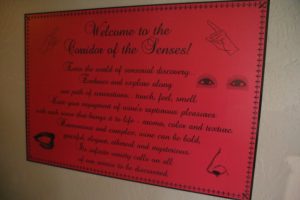
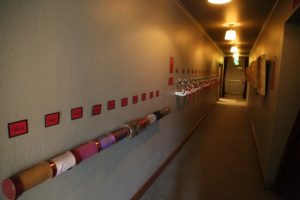
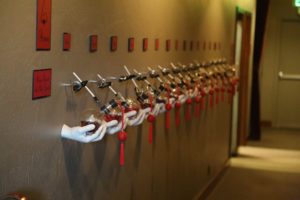
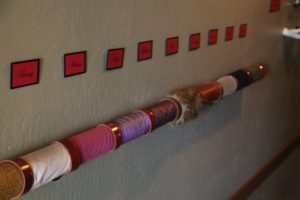
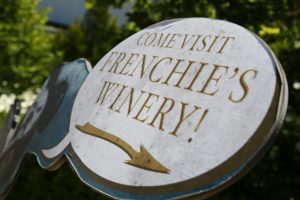
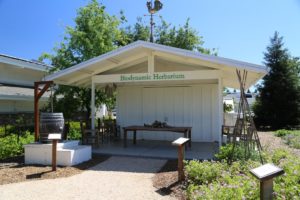
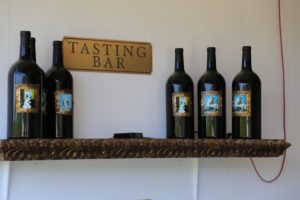
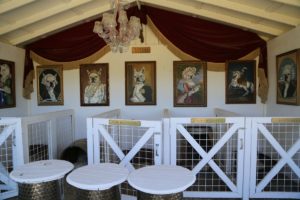
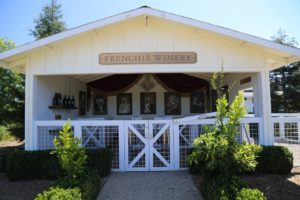
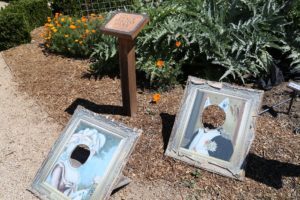
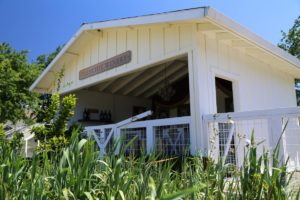
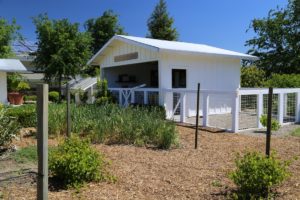
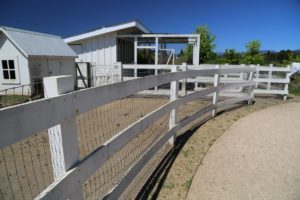
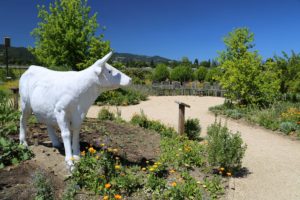
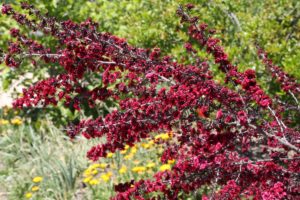
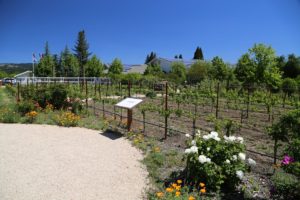
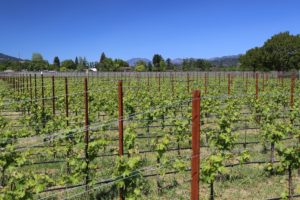
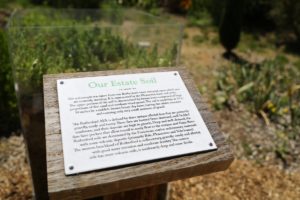
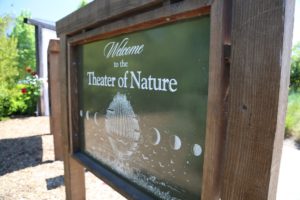
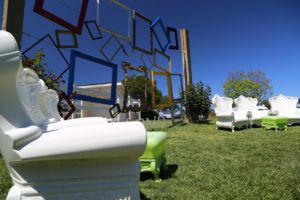
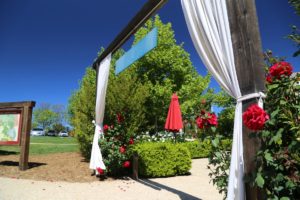
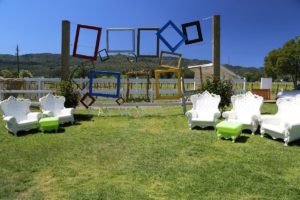
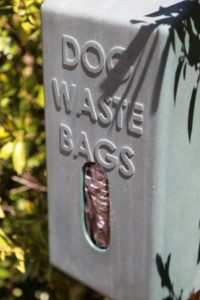
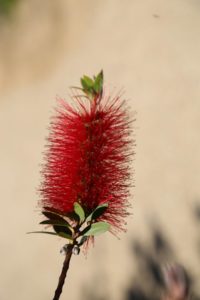
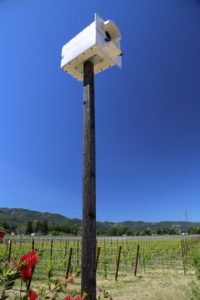
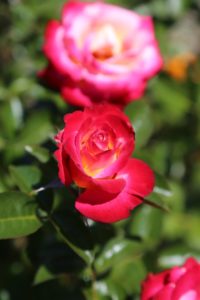
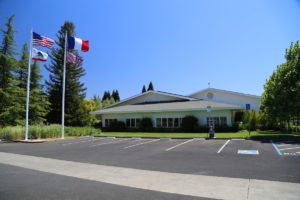
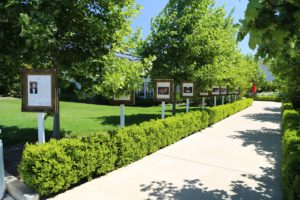
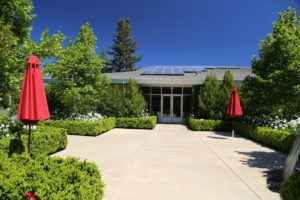
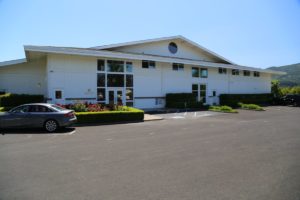
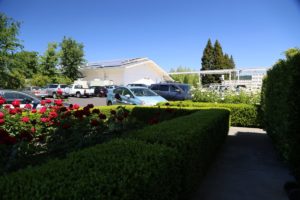
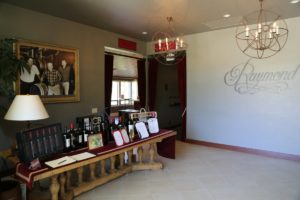
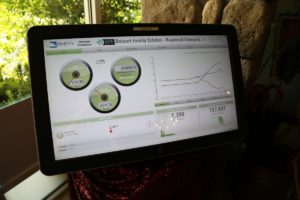
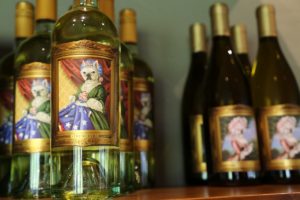
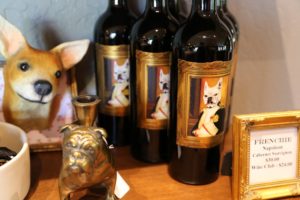
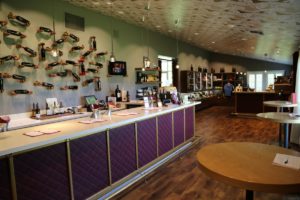
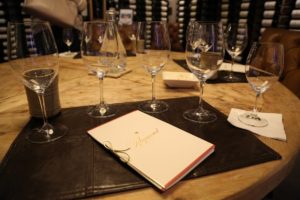
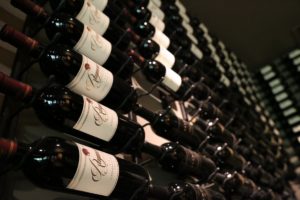
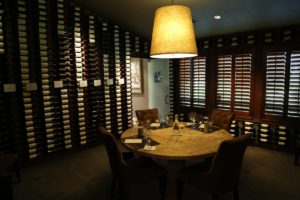
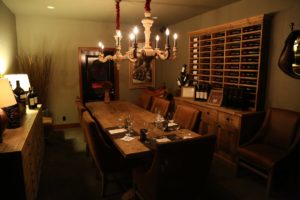
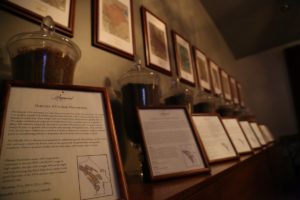
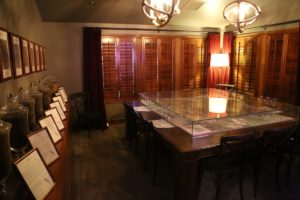
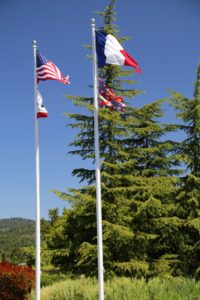
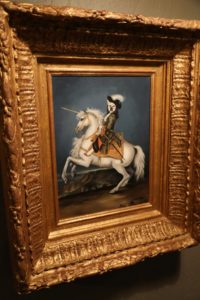
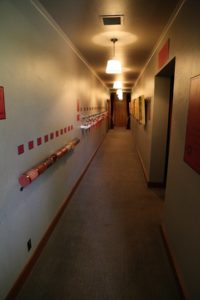
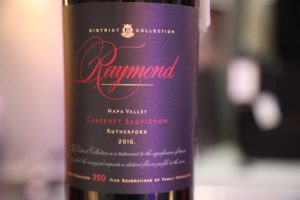
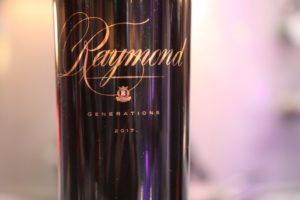
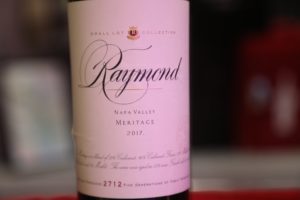
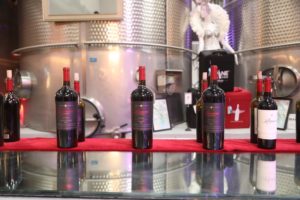
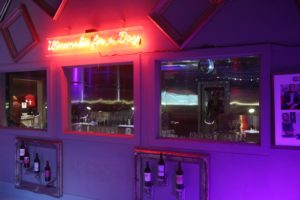
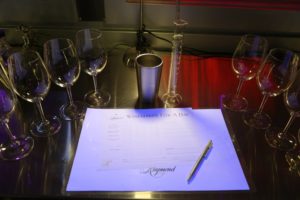
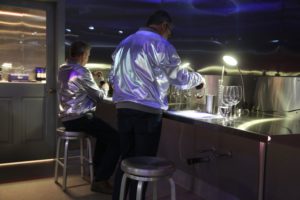
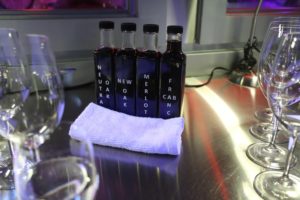
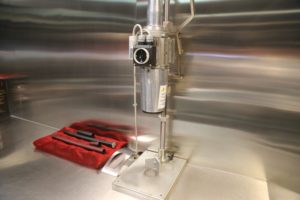
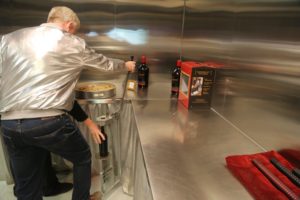
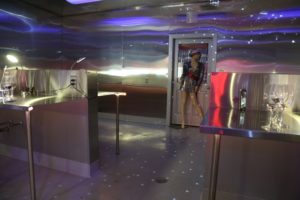
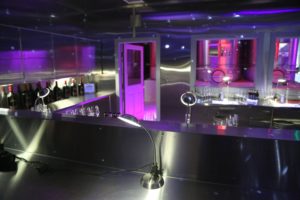
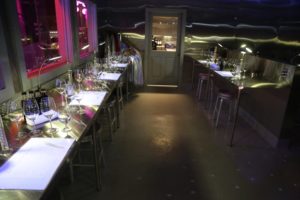
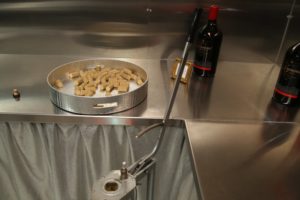
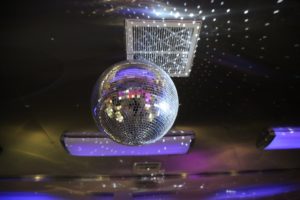
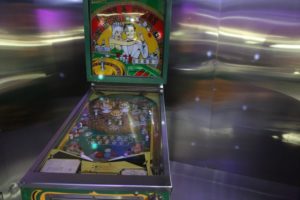
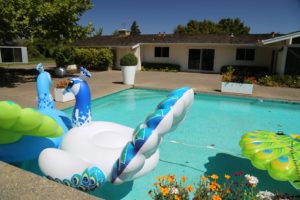
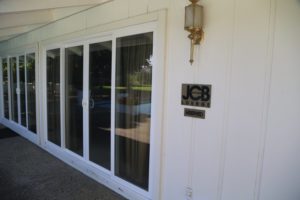
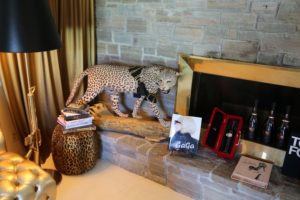
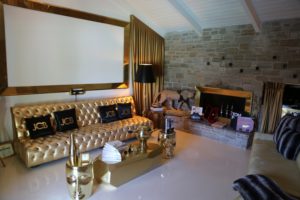
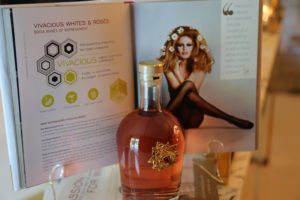
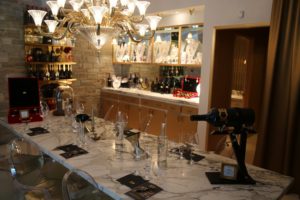
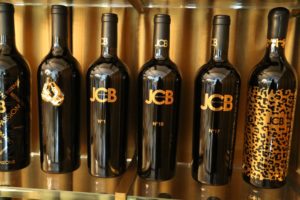
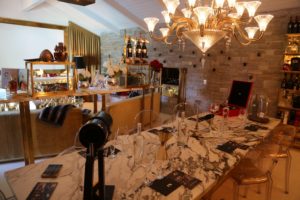
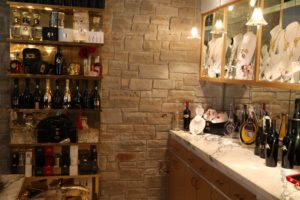
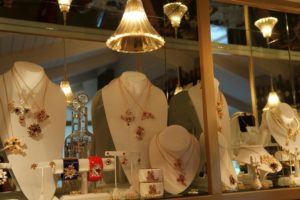
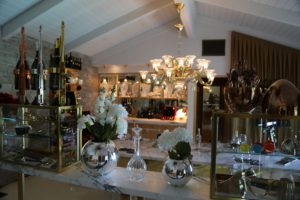
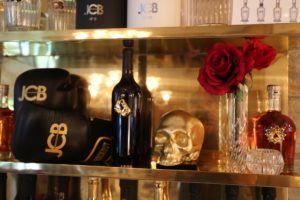
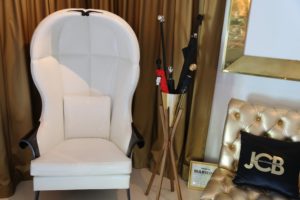
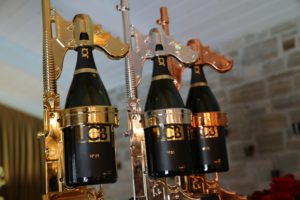
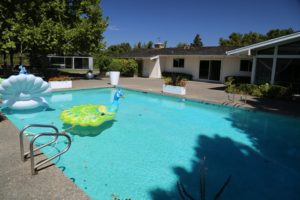
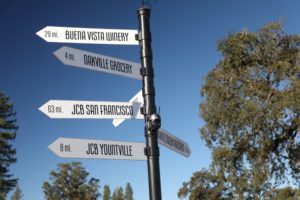
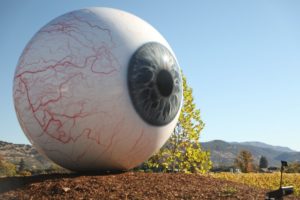
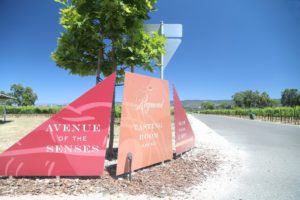
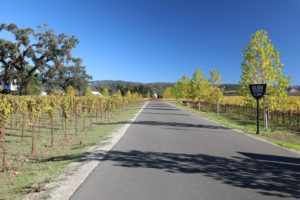
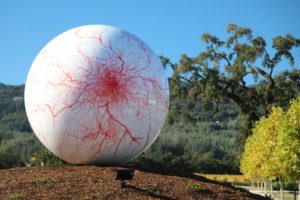
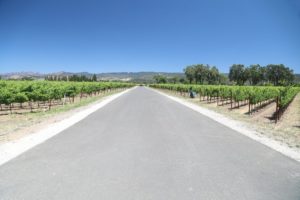
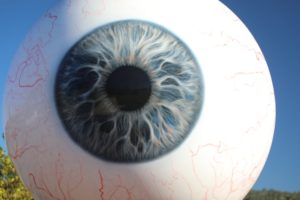
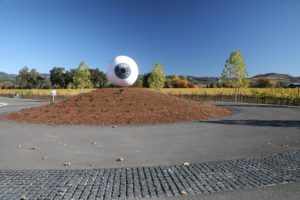
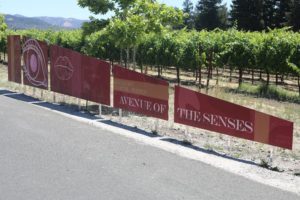
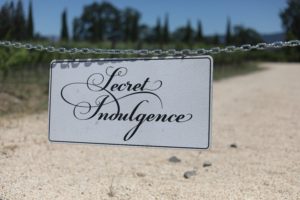

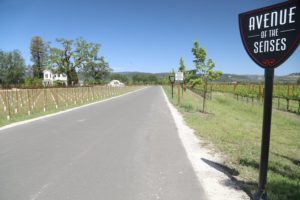
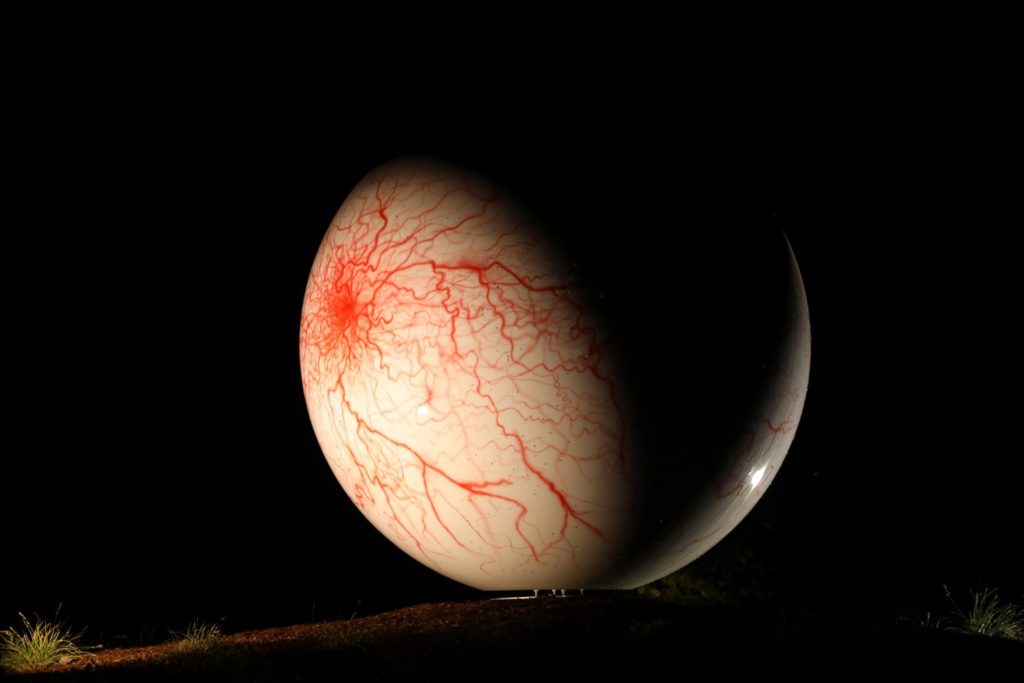
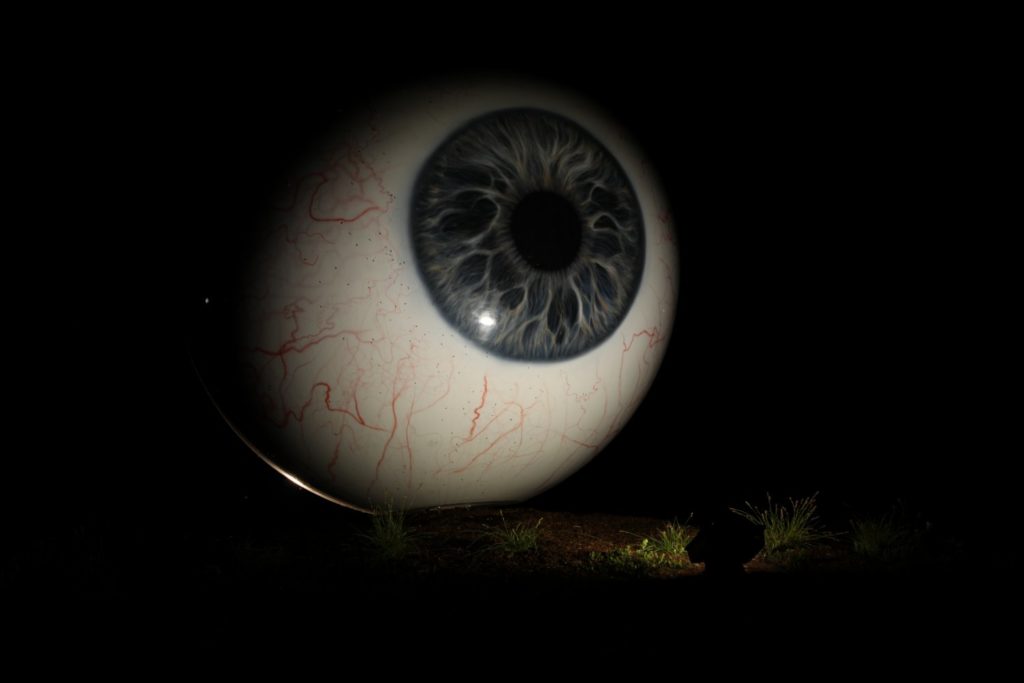
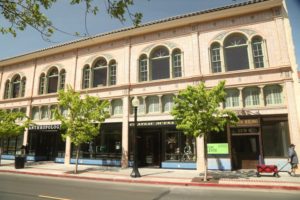
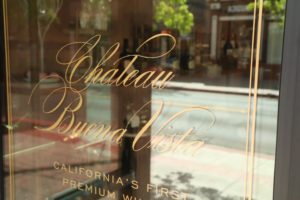
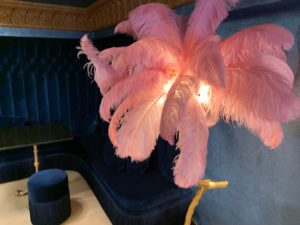
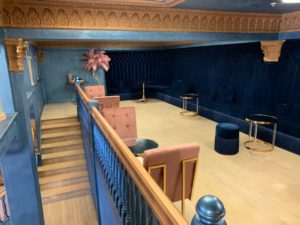
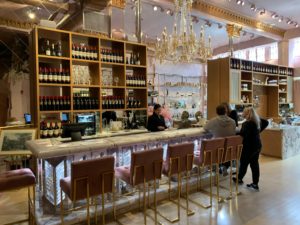
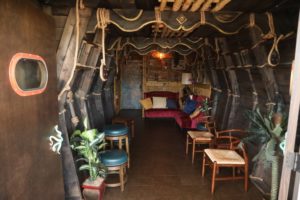
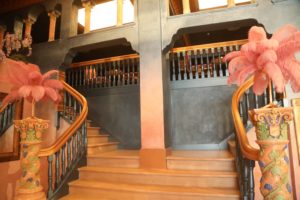
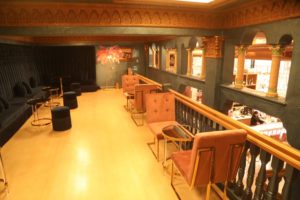
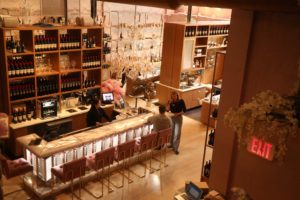

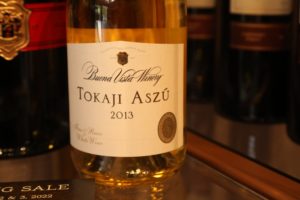
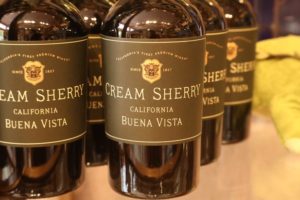
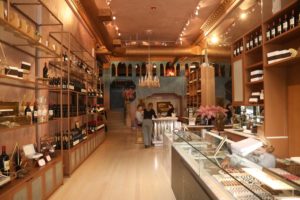
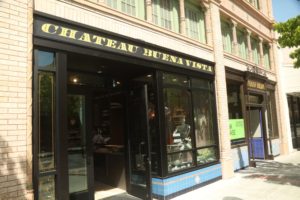
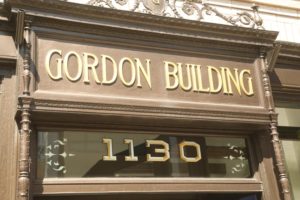
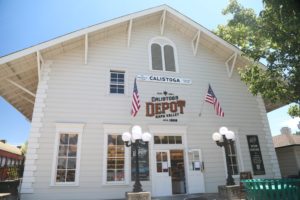
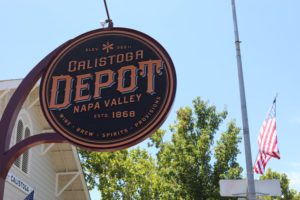
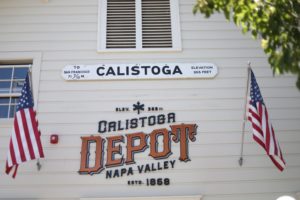
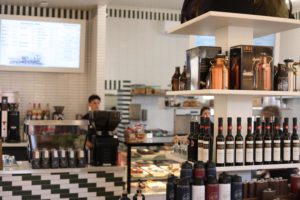
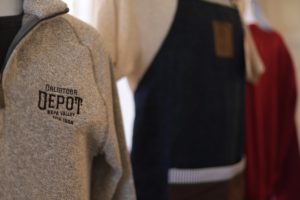
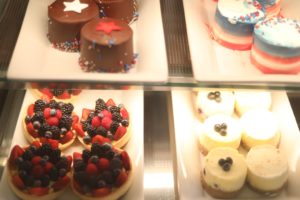
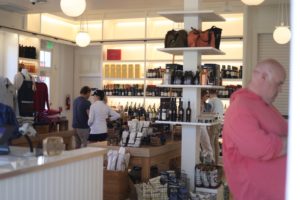
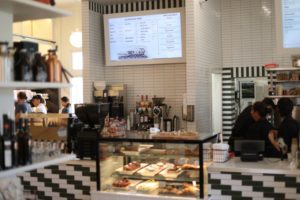
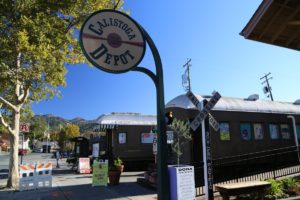
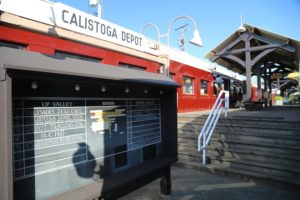
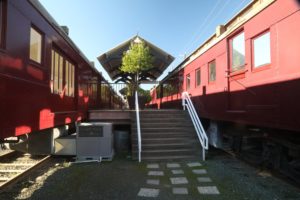
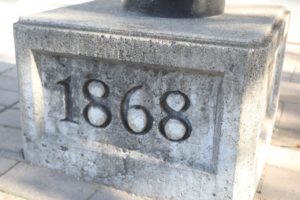

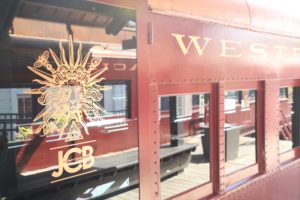

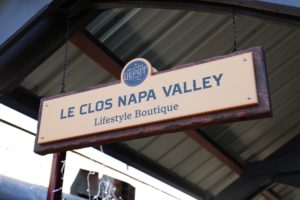
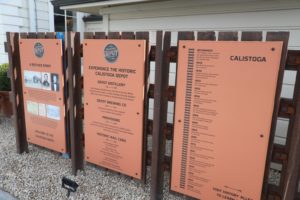
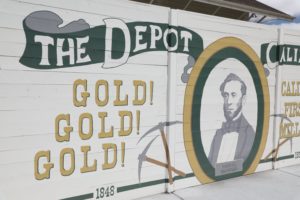
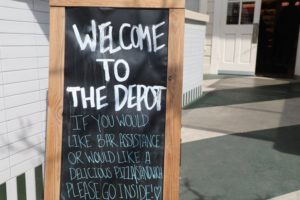

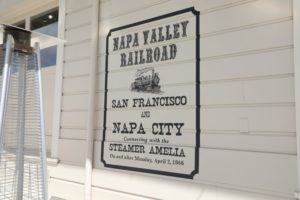
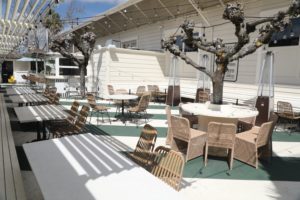
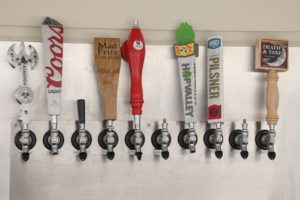
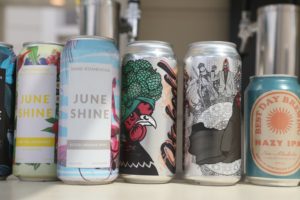
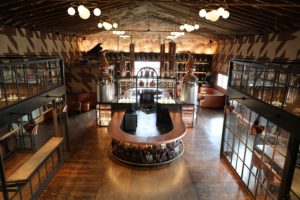
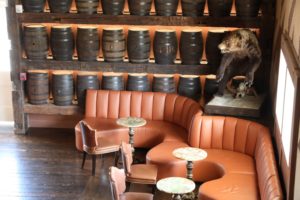
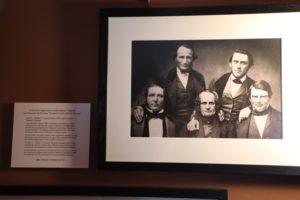
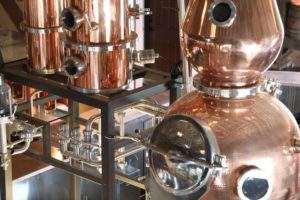
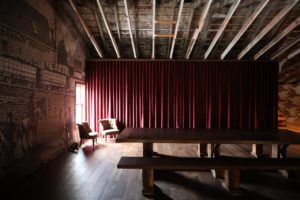
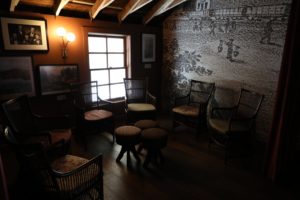
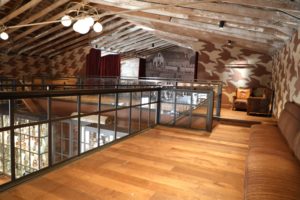
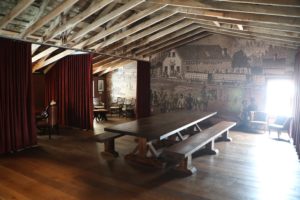
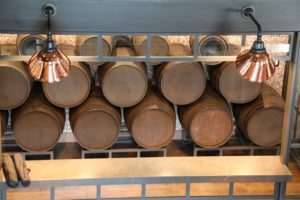
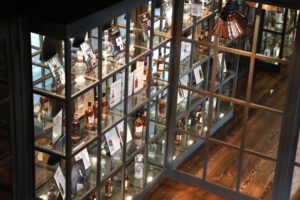
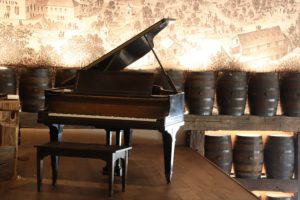
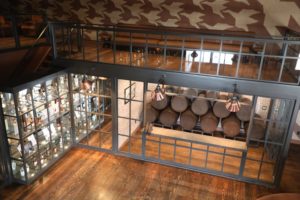
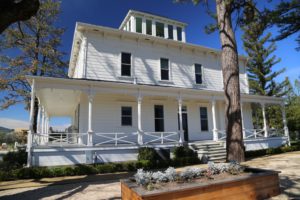
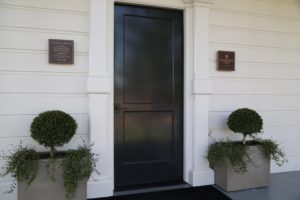
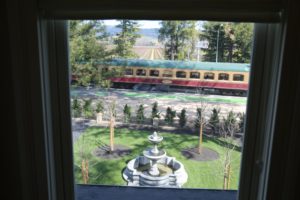
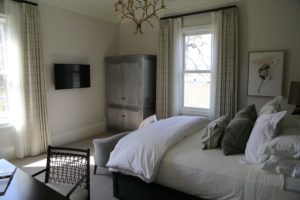
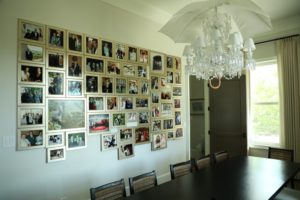
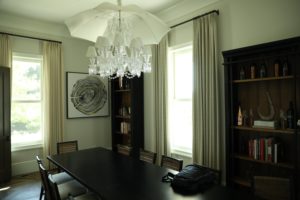
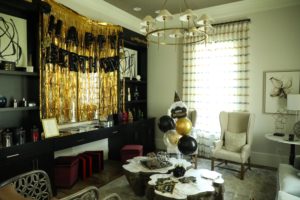
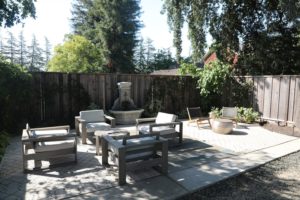
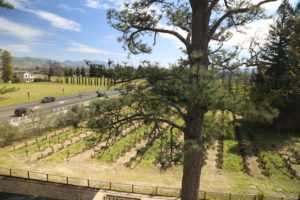
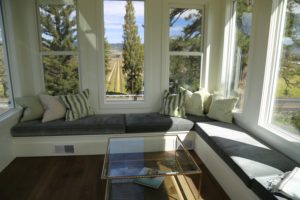
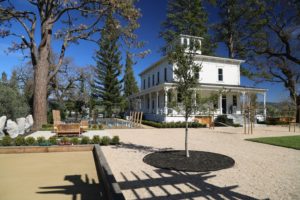
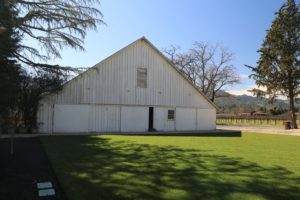
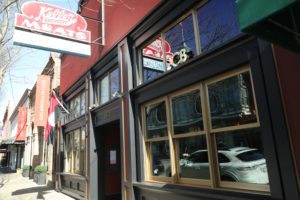
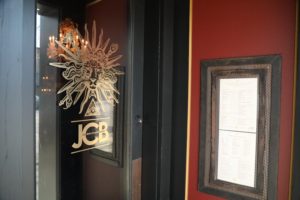
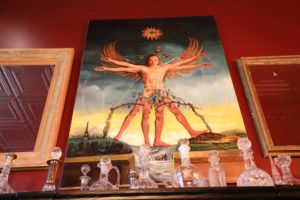
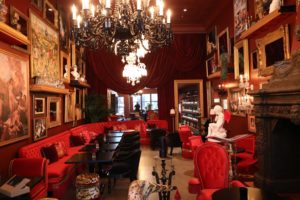
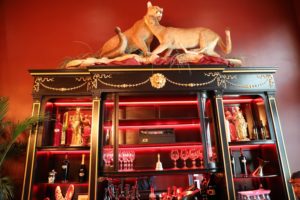
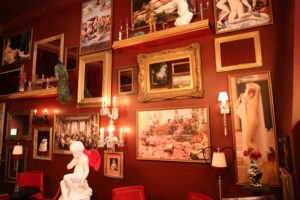
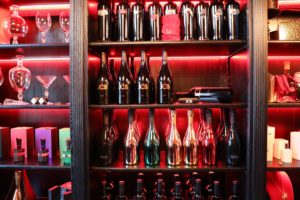
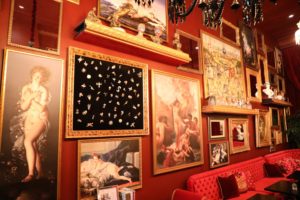
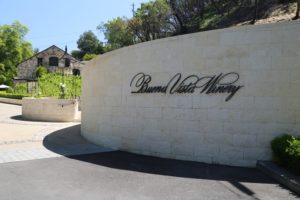
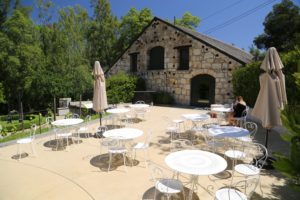
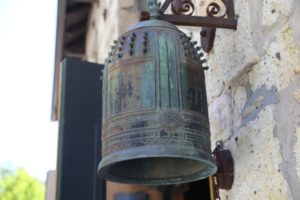
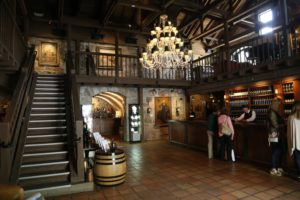
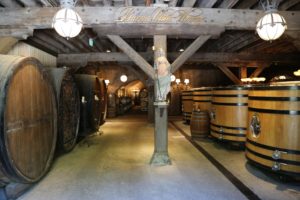
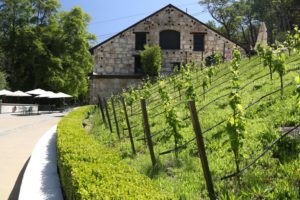
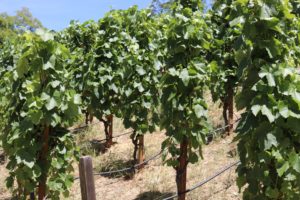
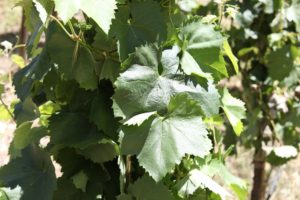
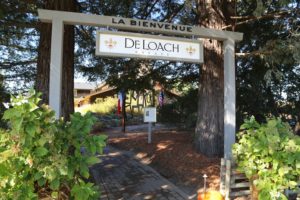

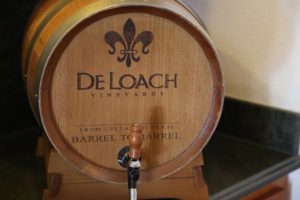
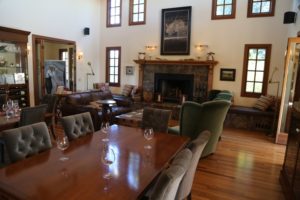
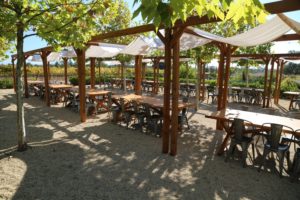
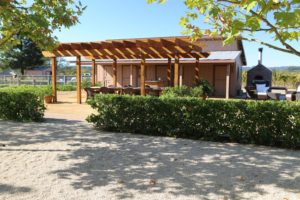

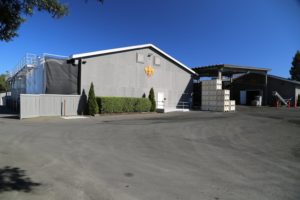
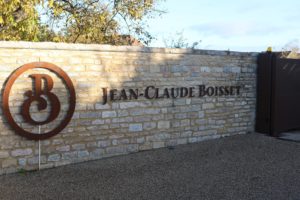
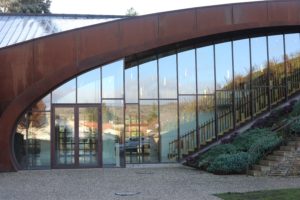
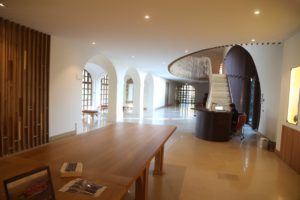
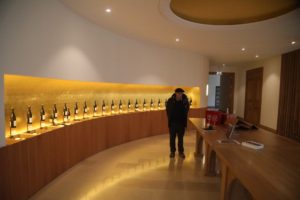
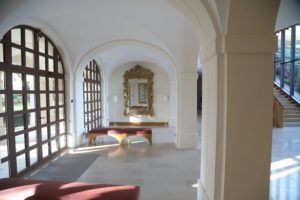
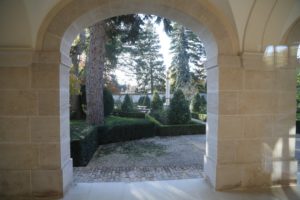
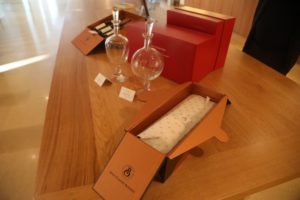
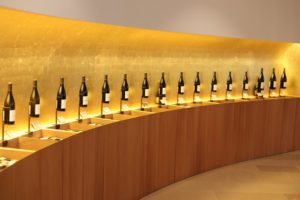
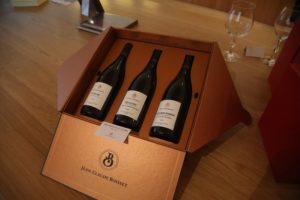
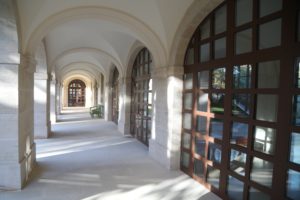
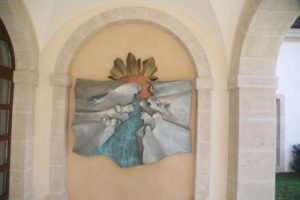
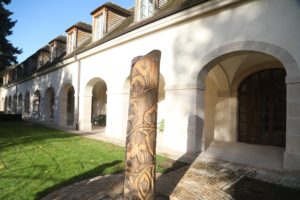
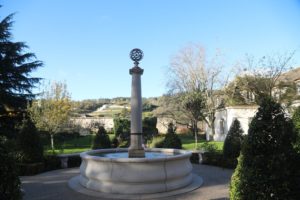

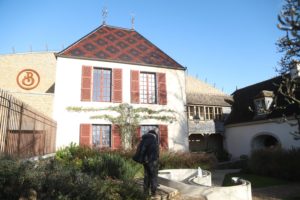
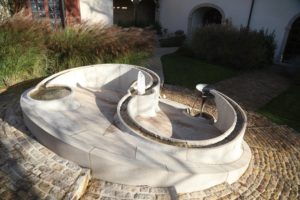
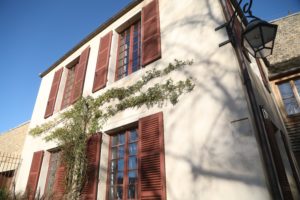
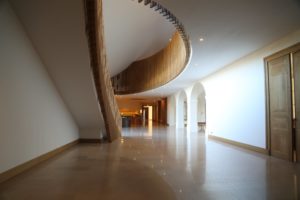
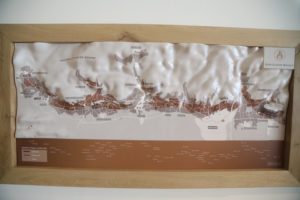
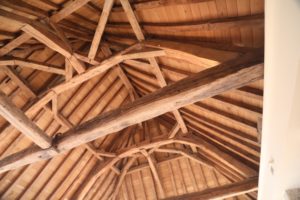
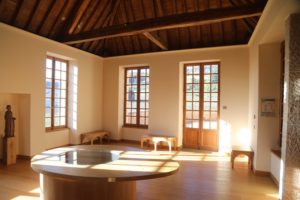
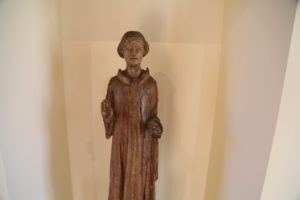
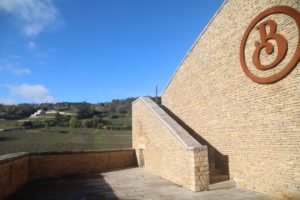
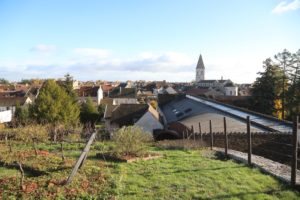
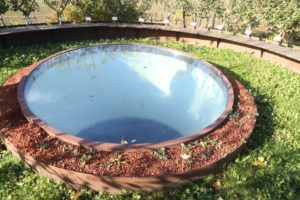
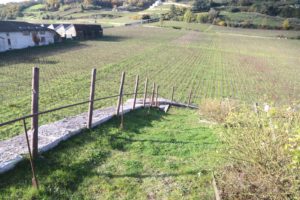
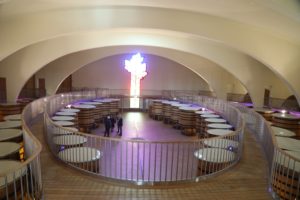
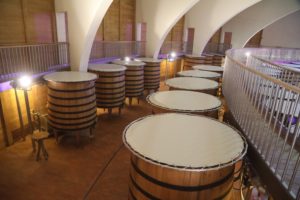
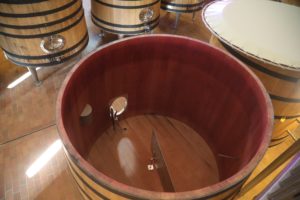
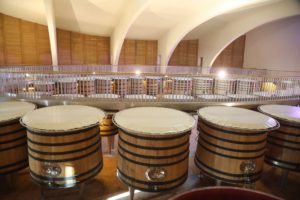
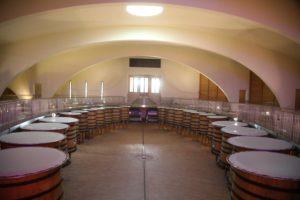
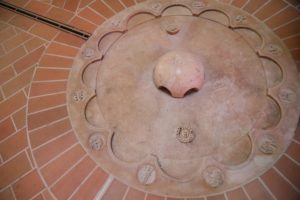
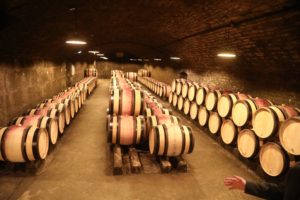
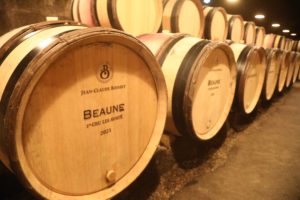
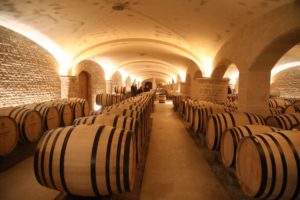
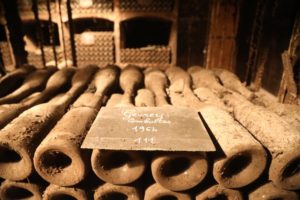
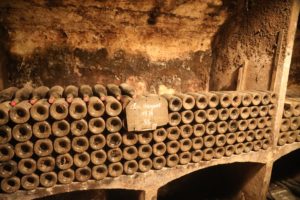
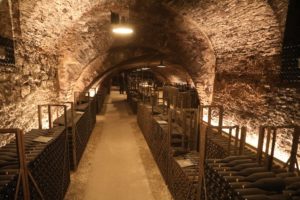
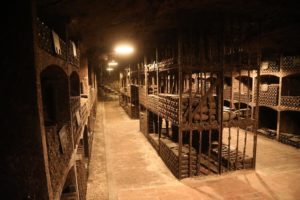
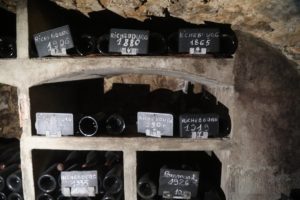
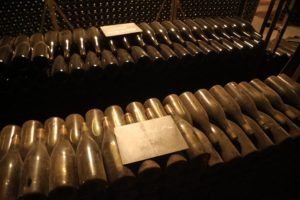
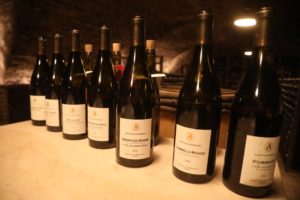
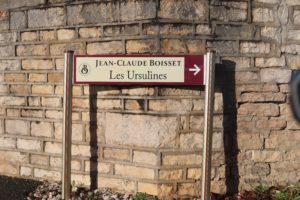
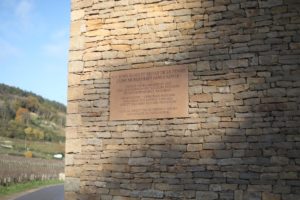
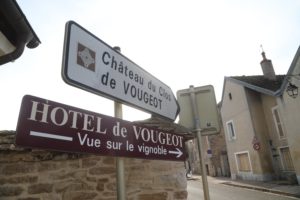
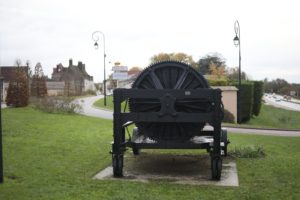
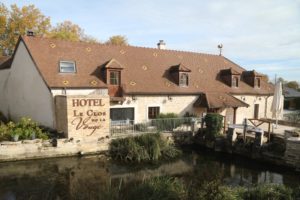
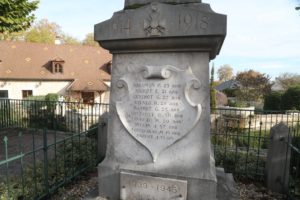
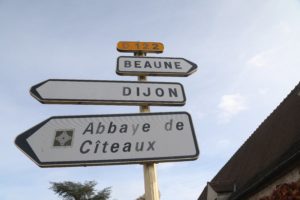
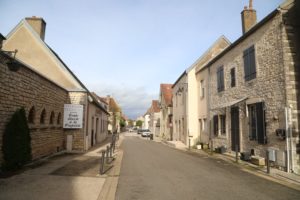
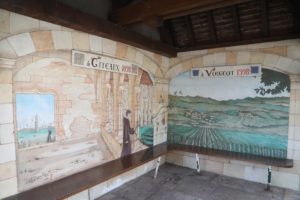
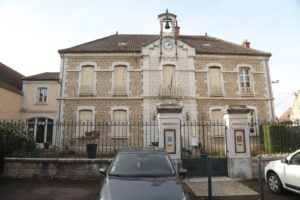
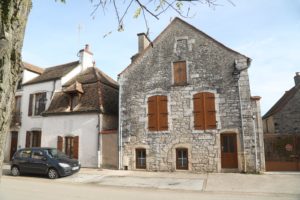
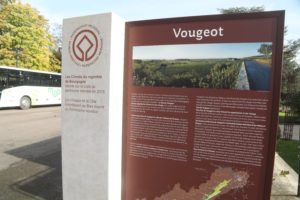
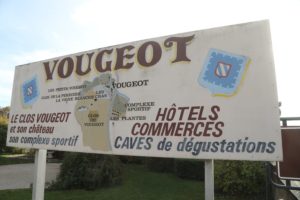
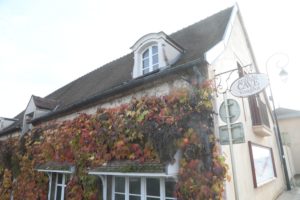
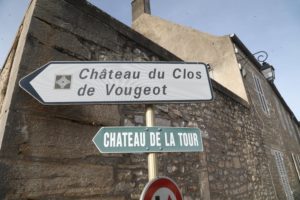
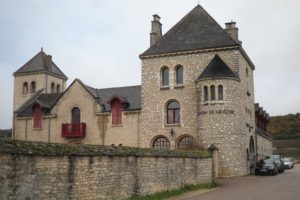

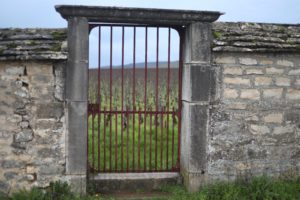
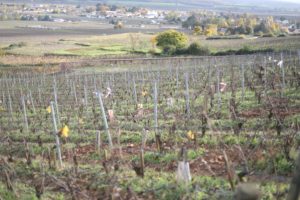
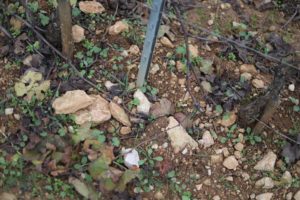
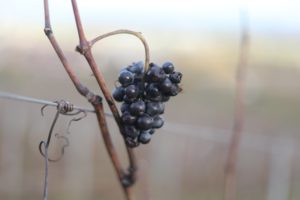
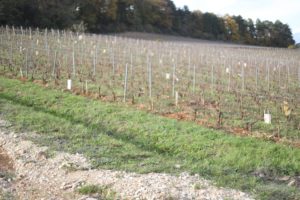
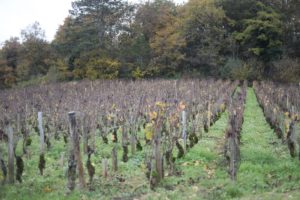
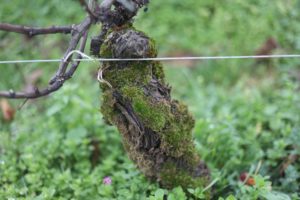
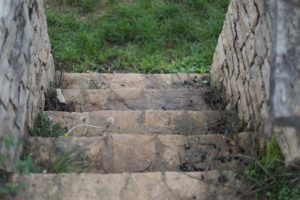
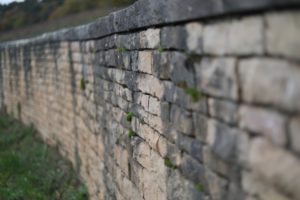
Leave a Reply